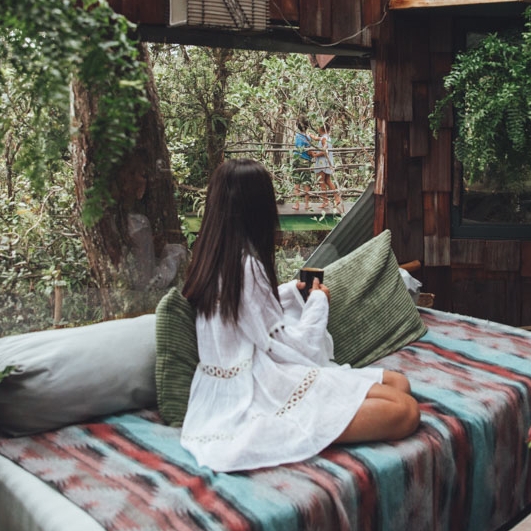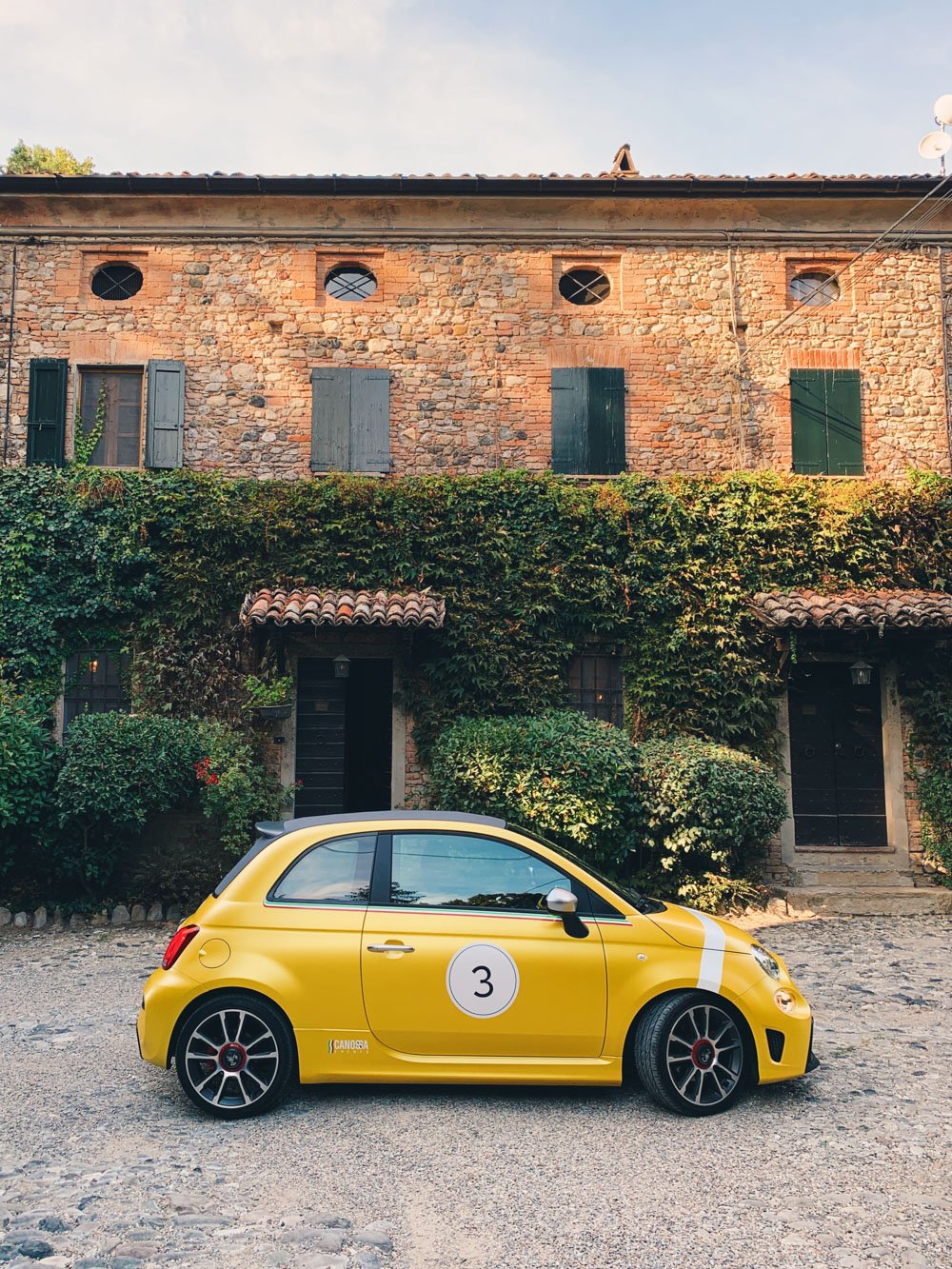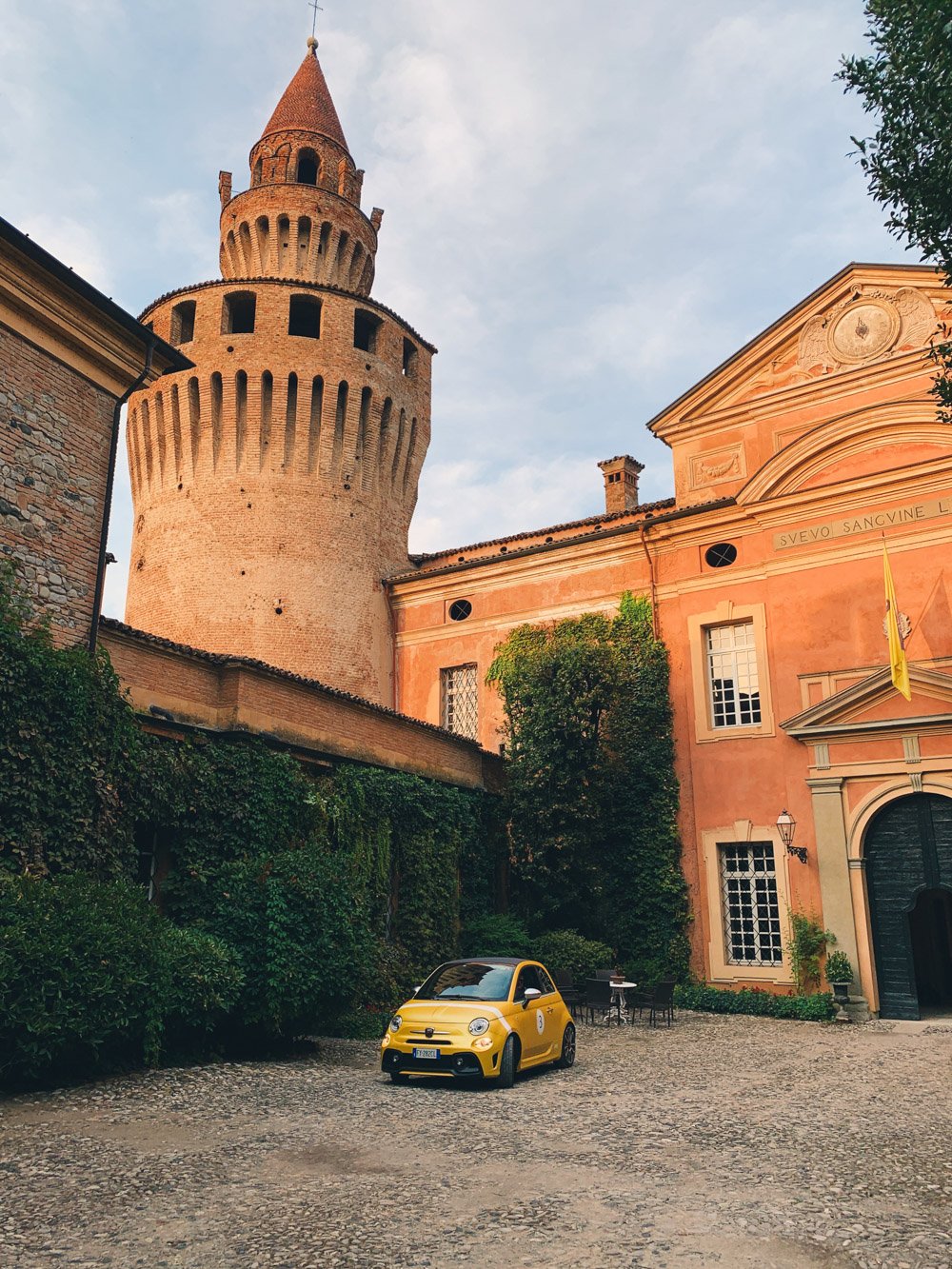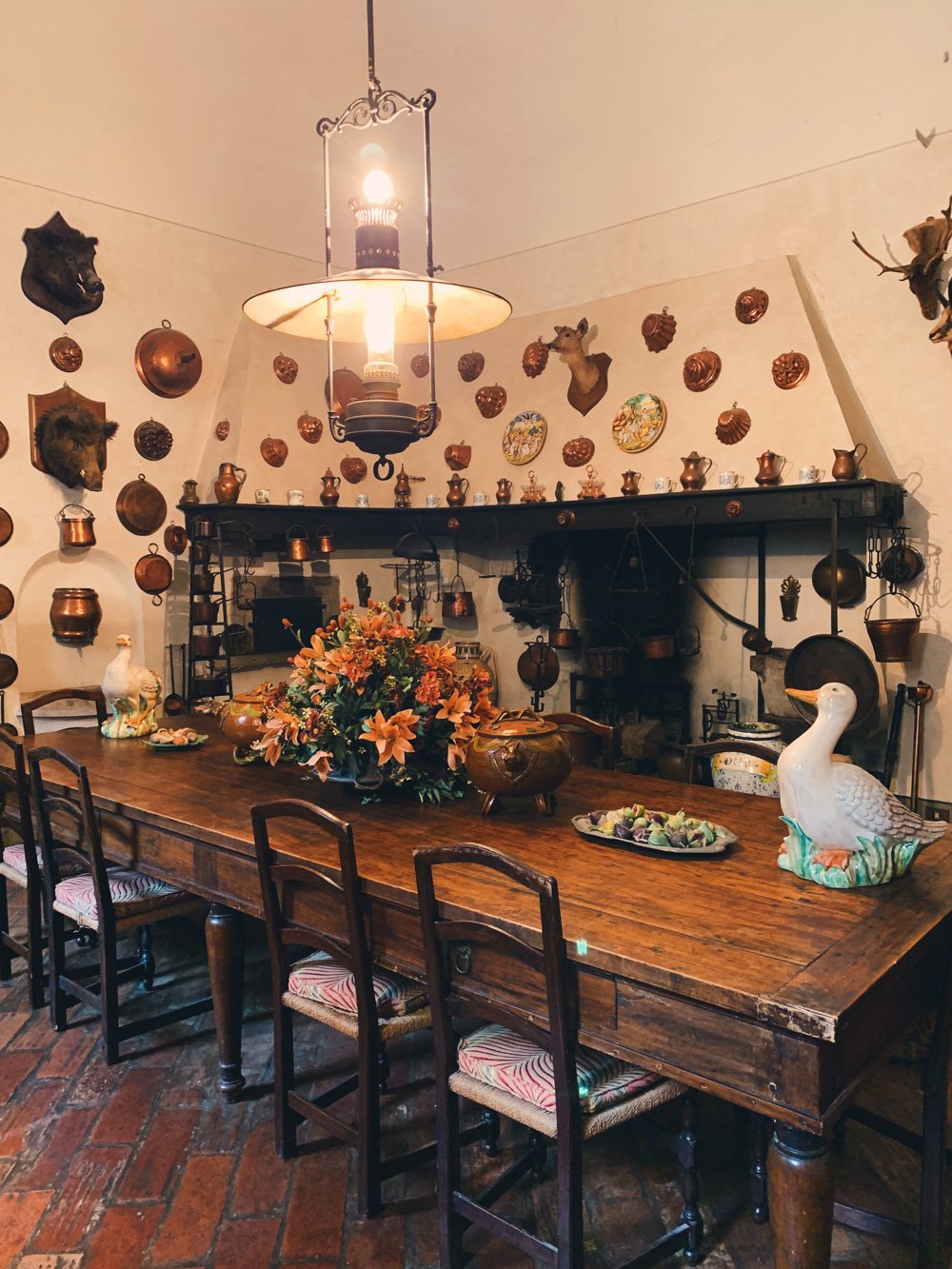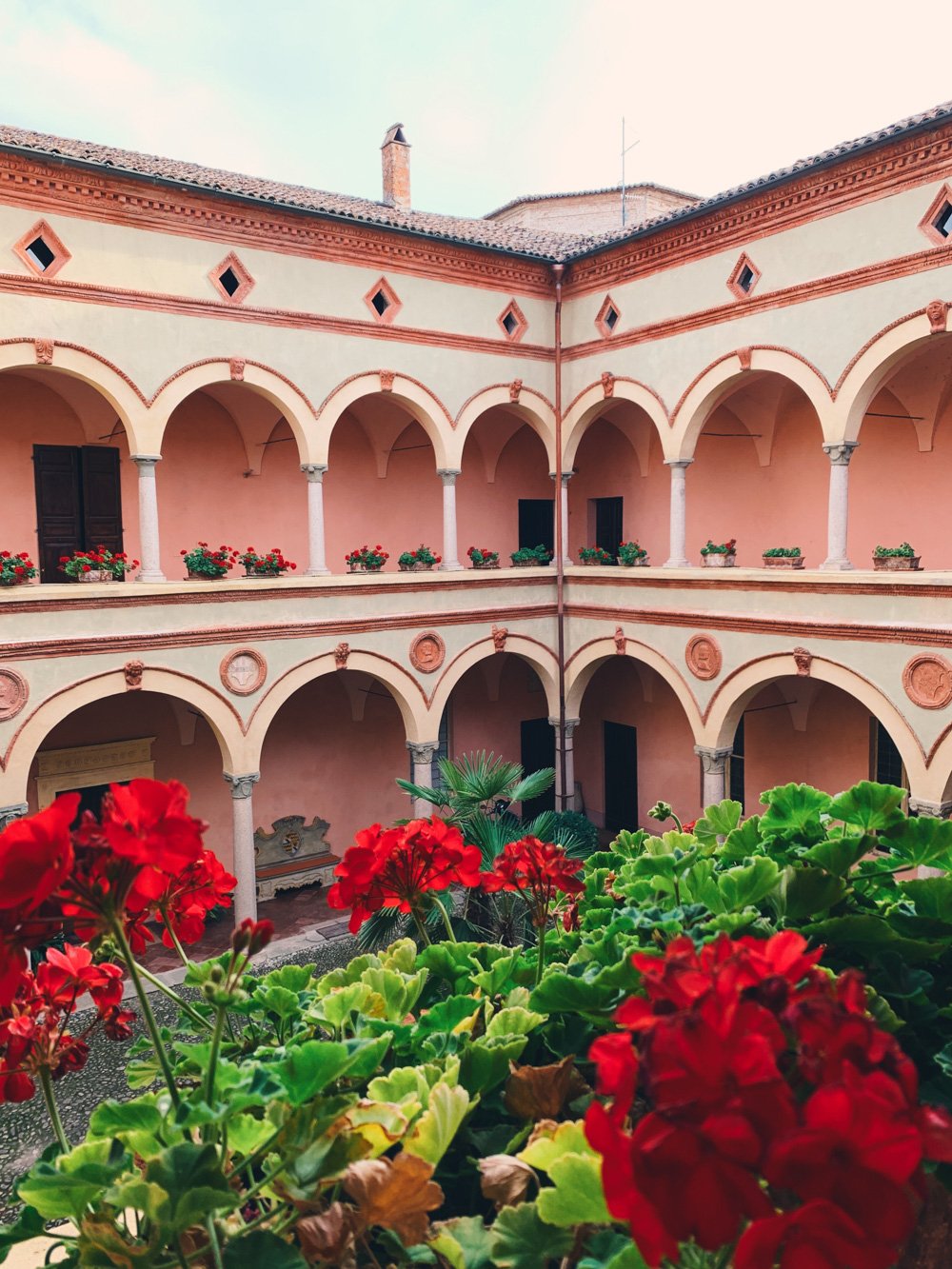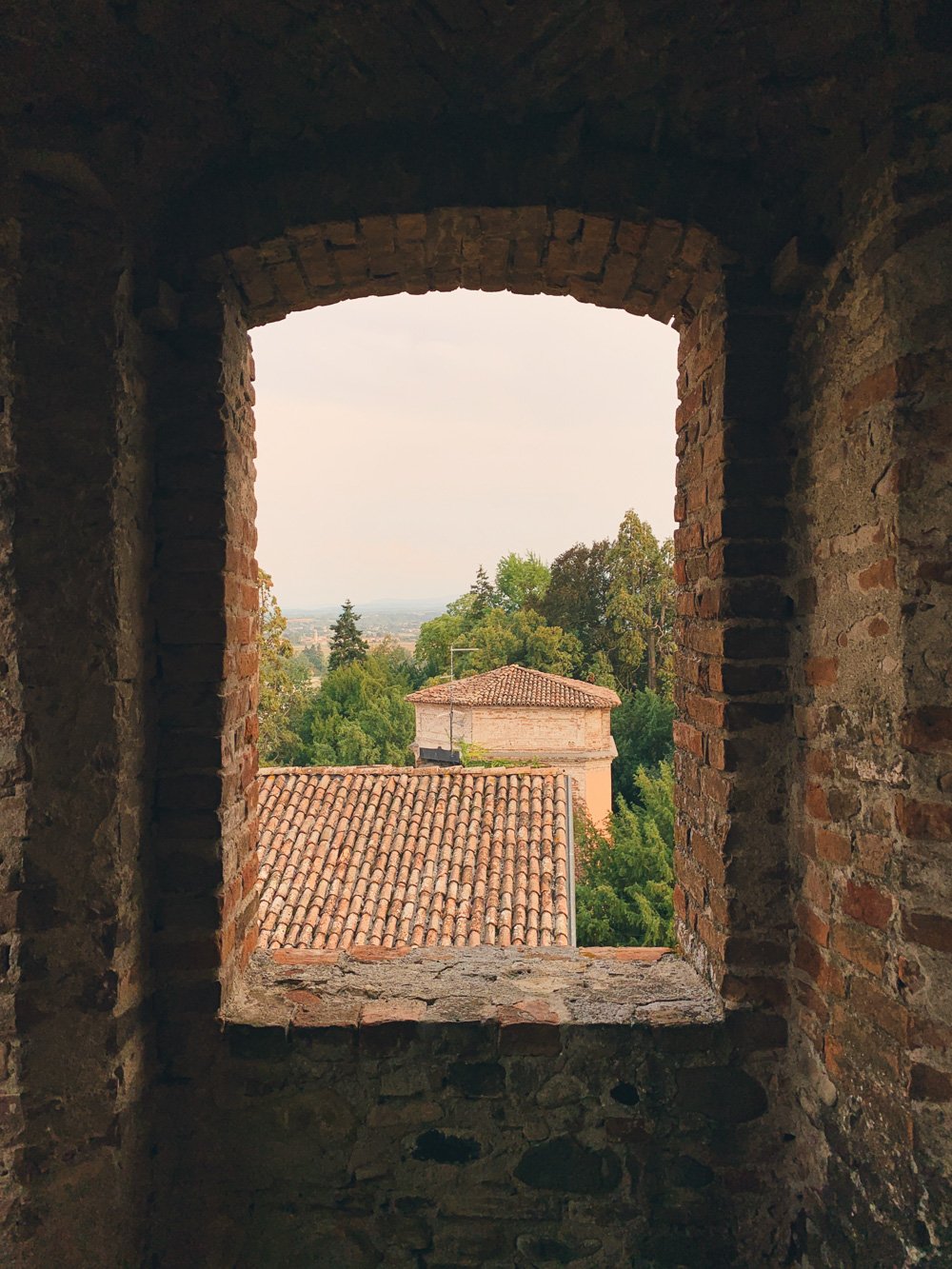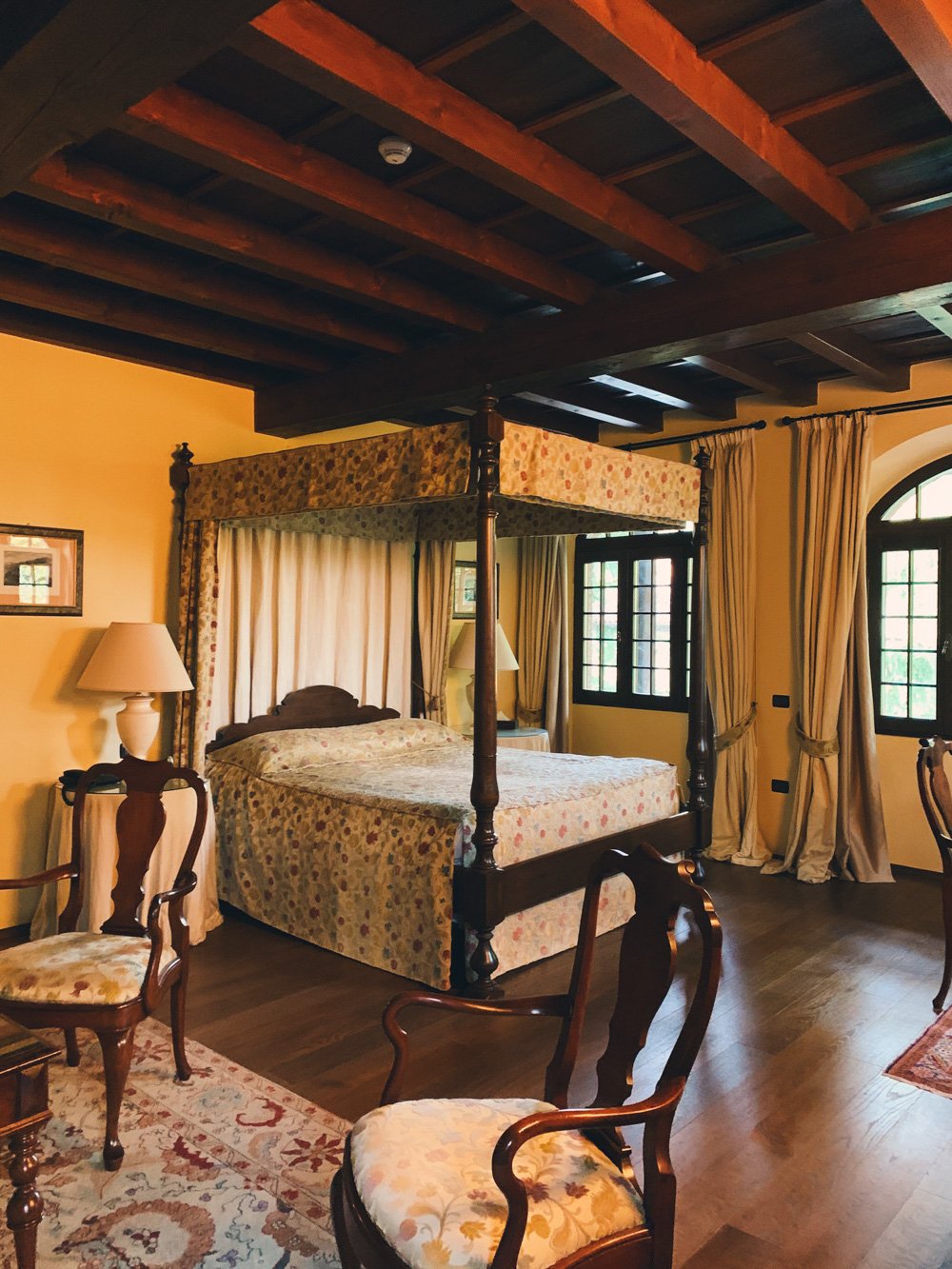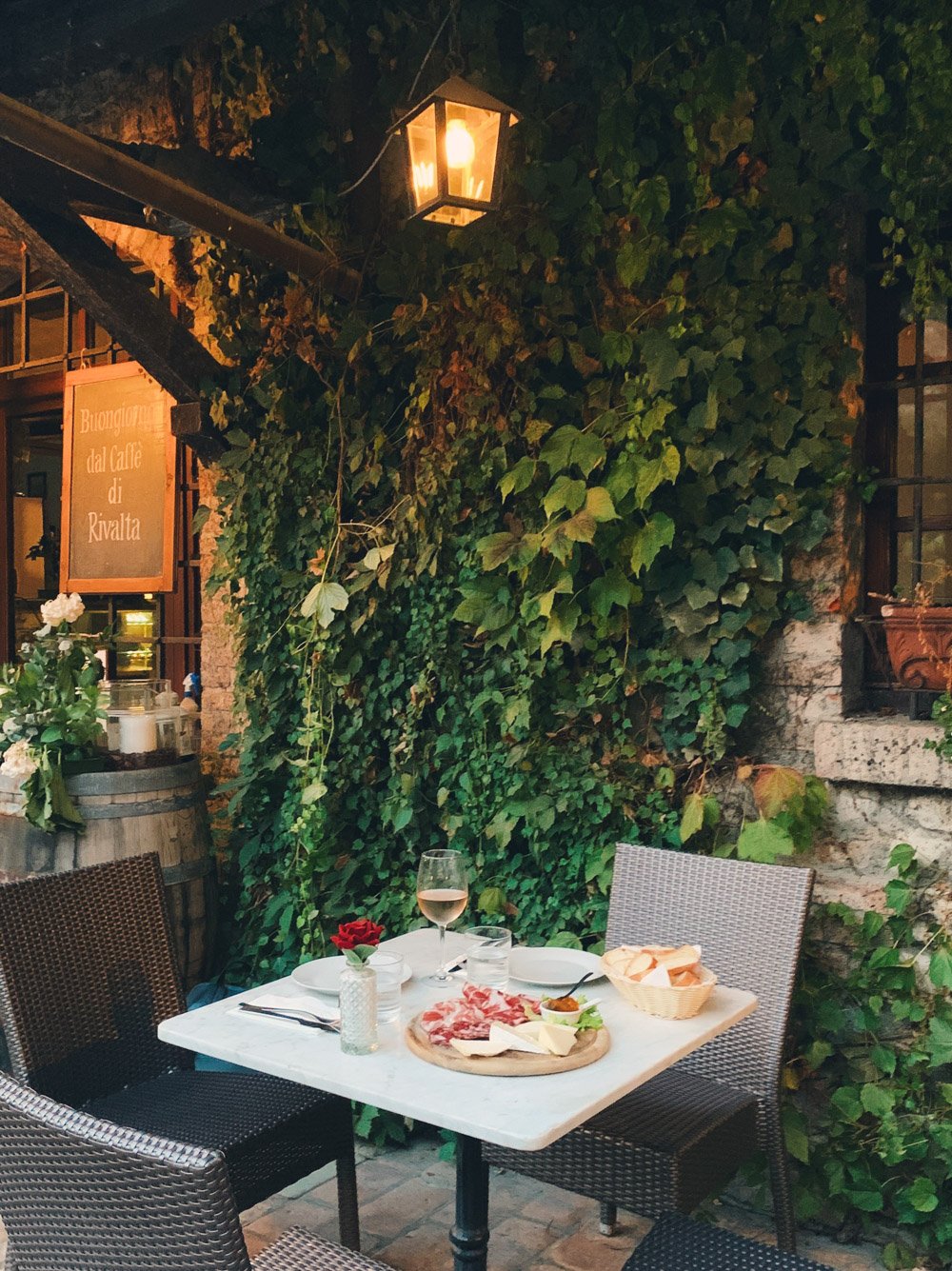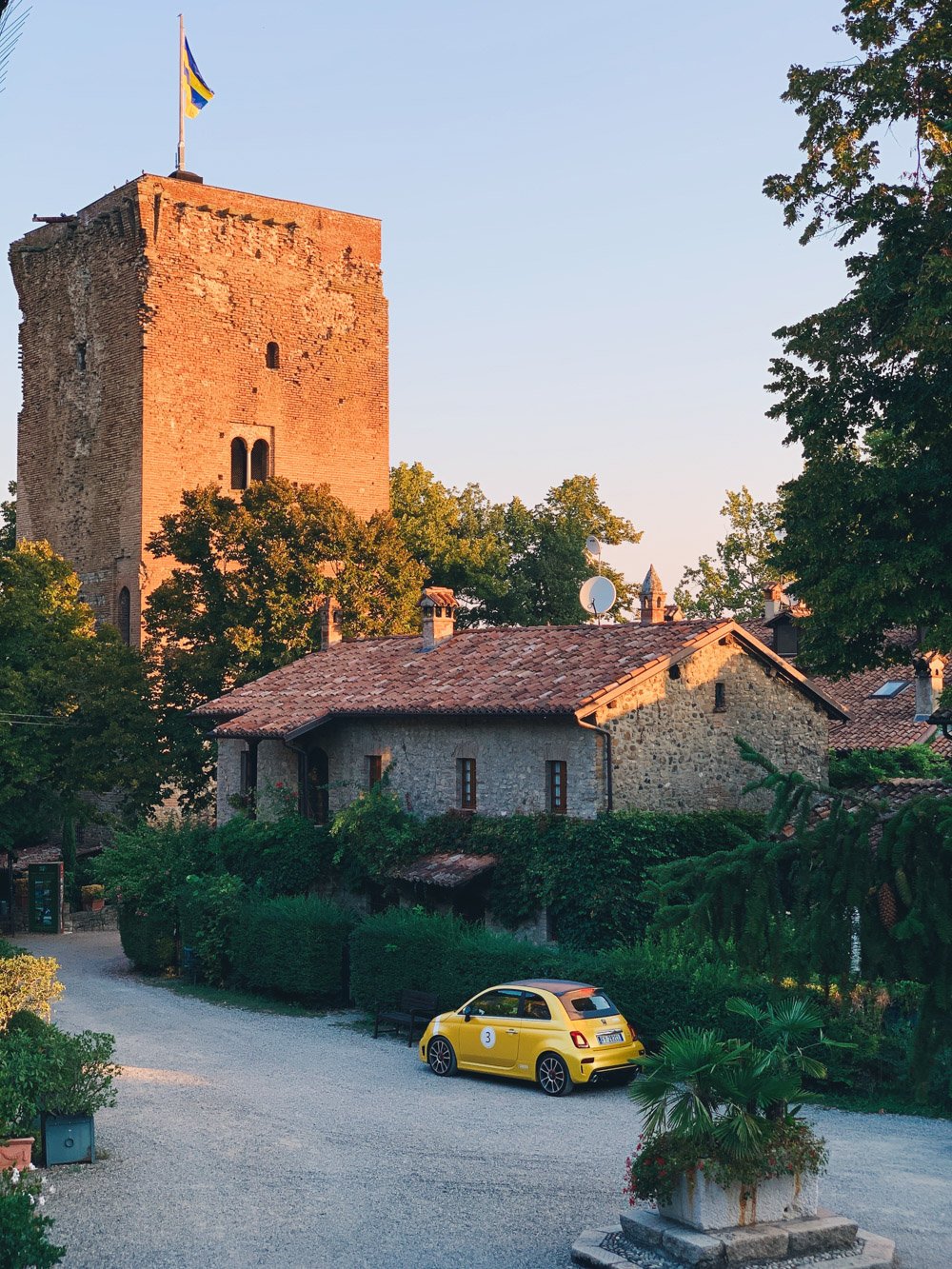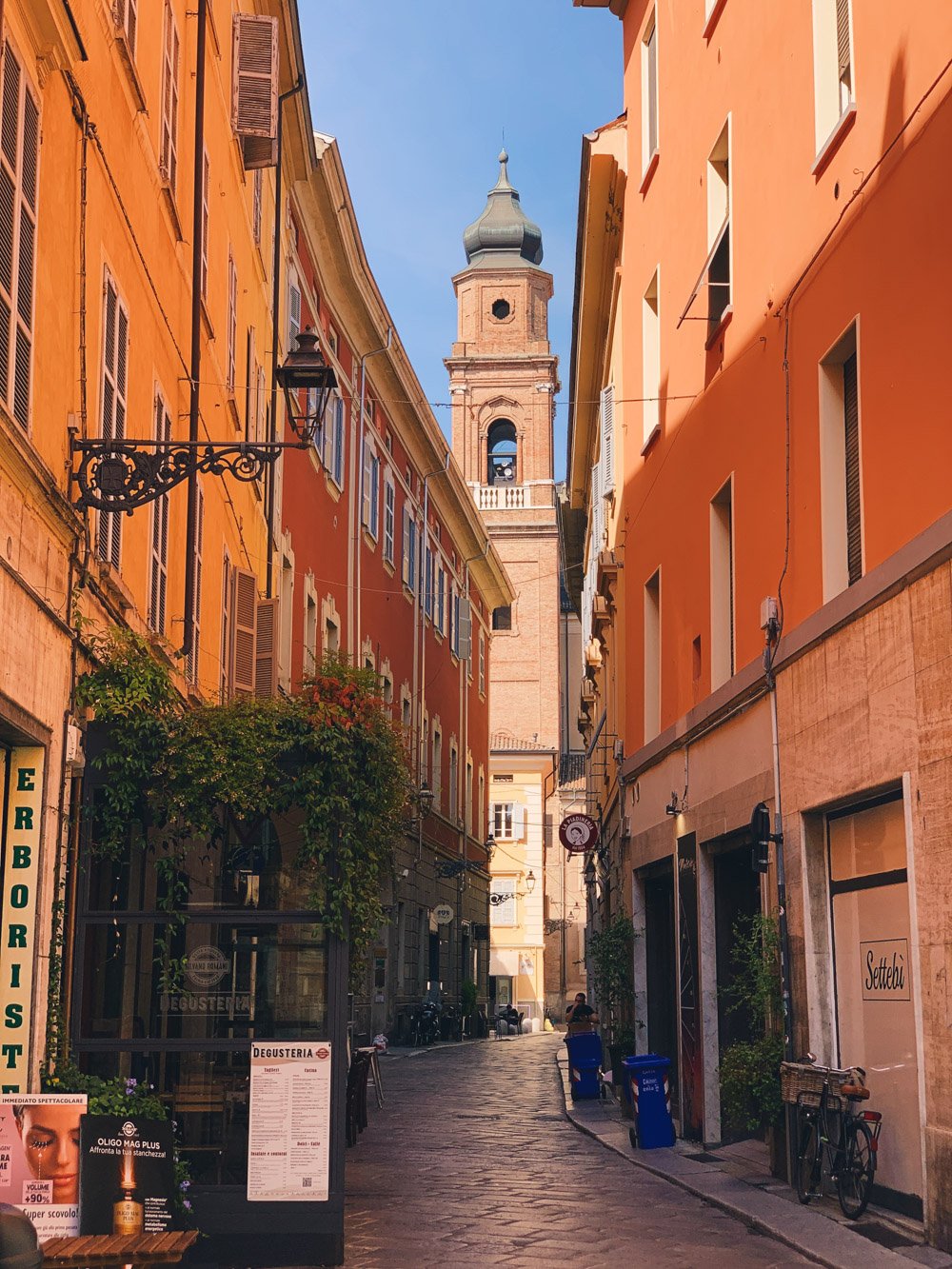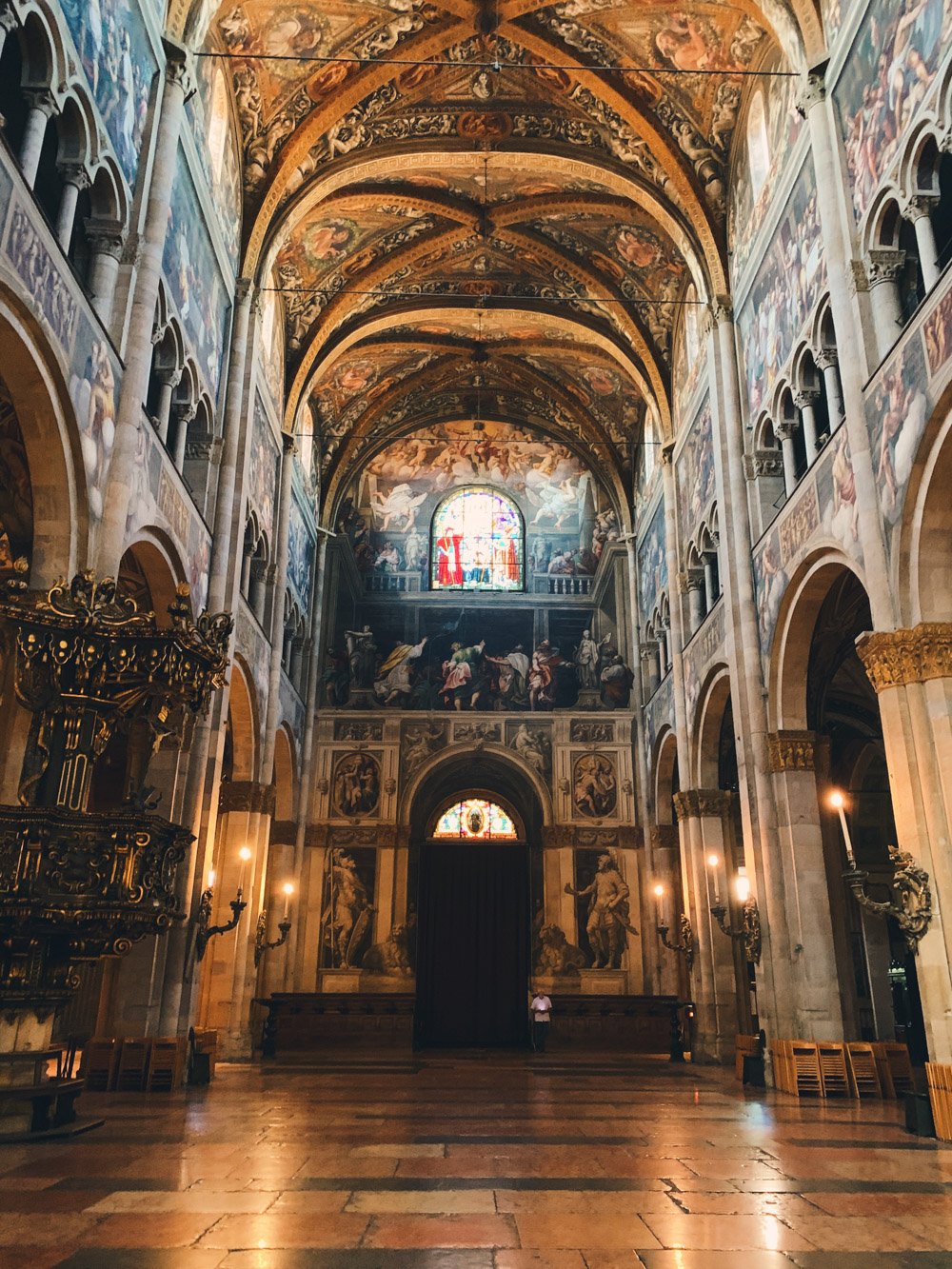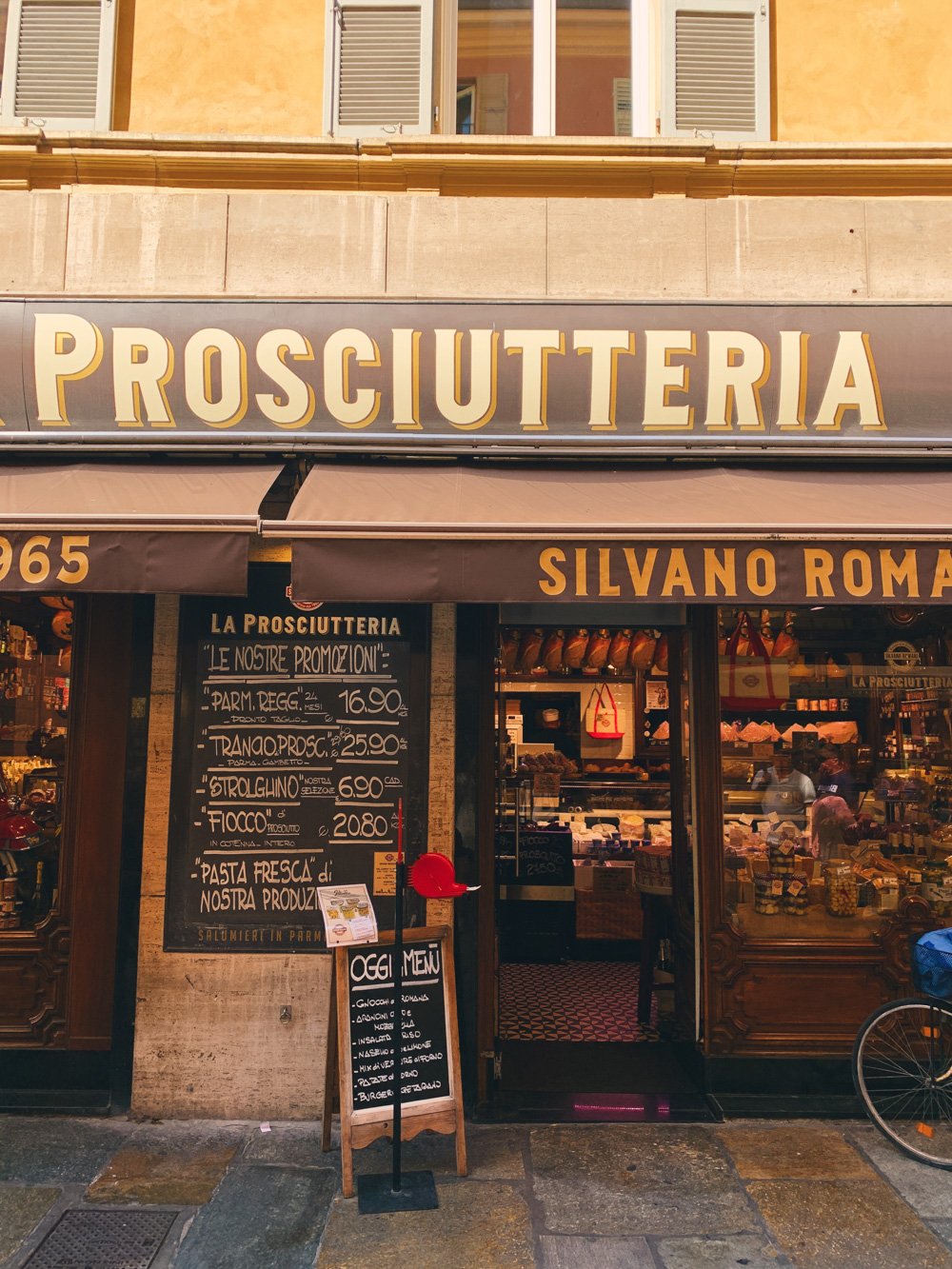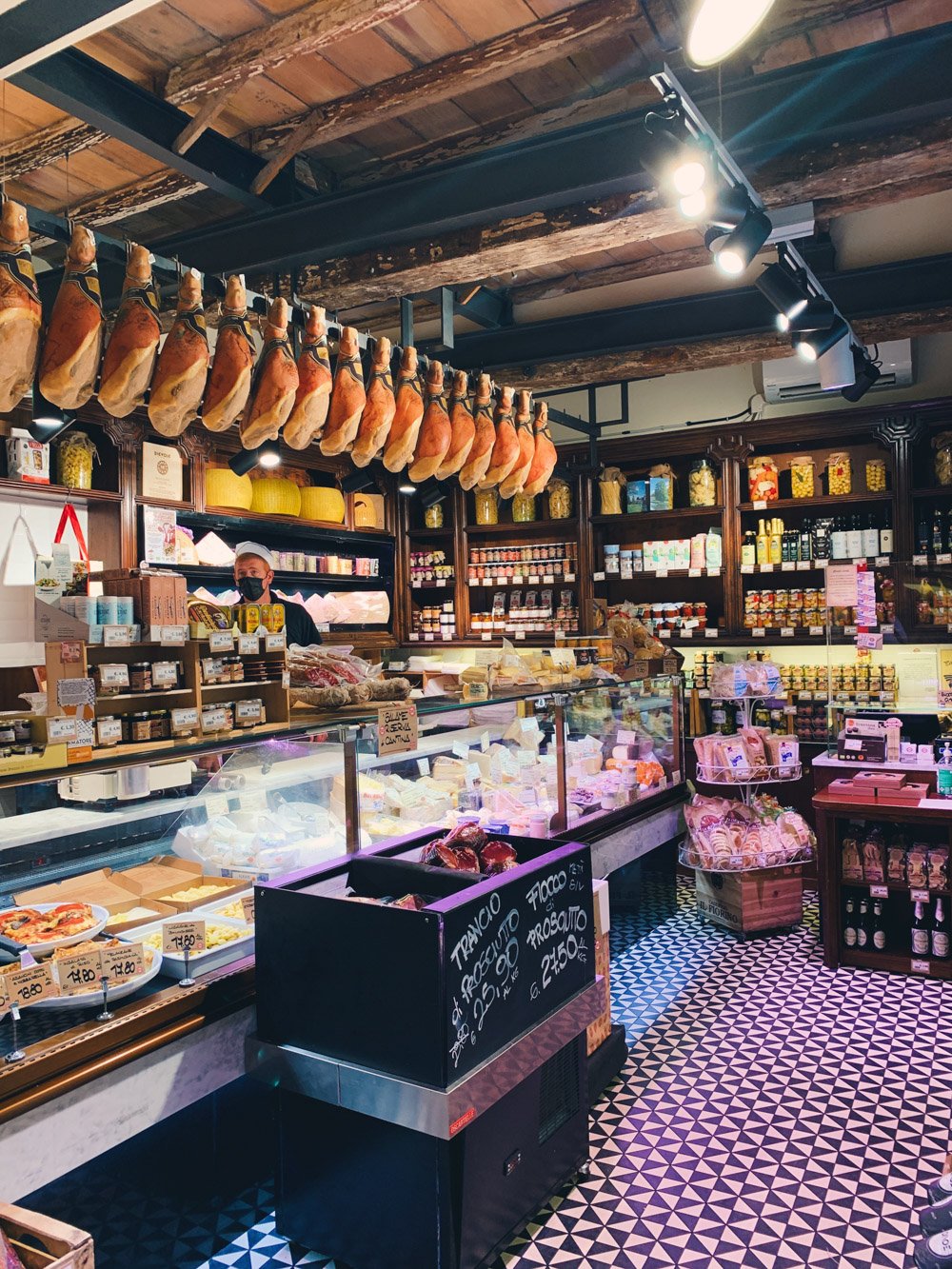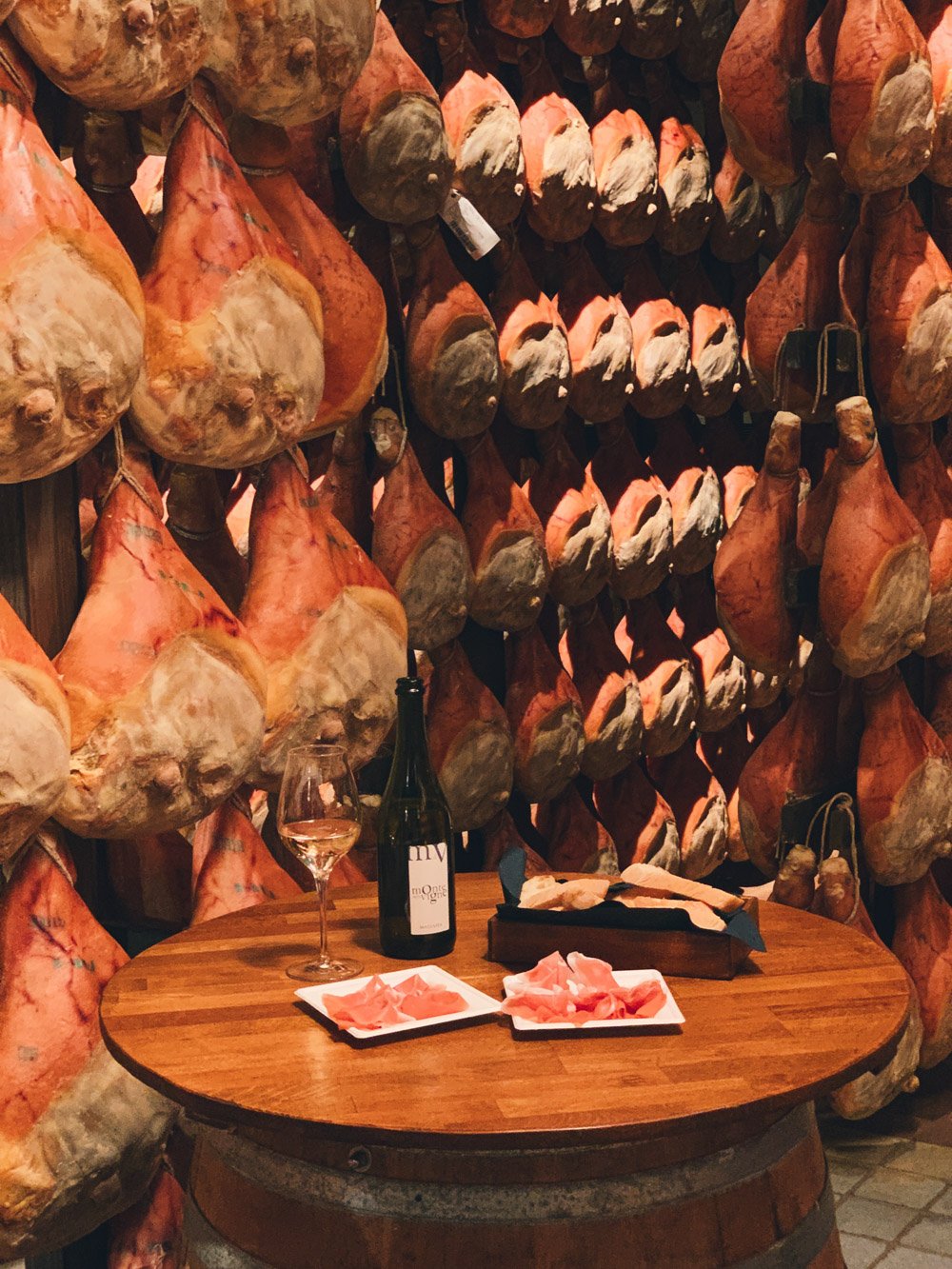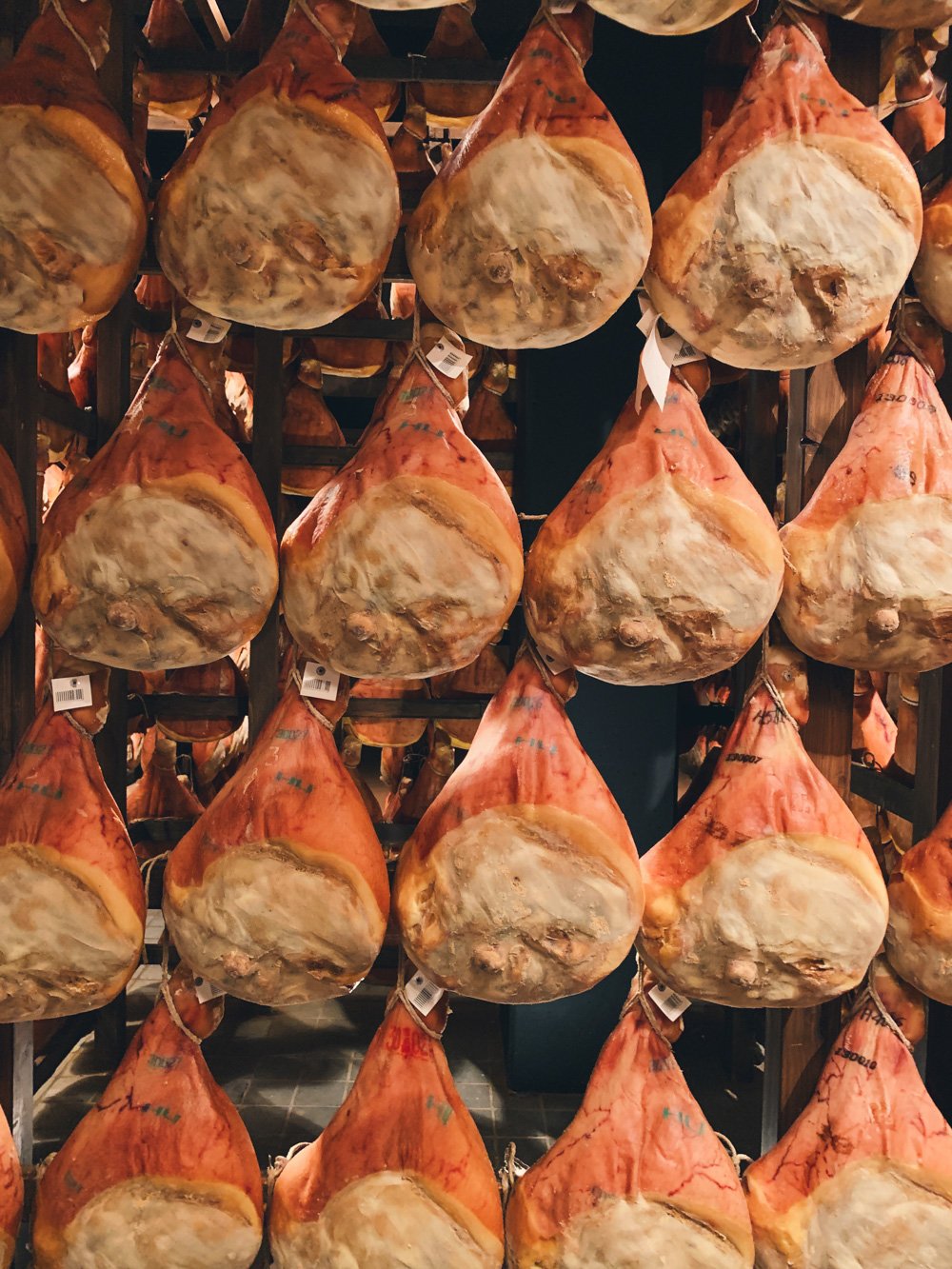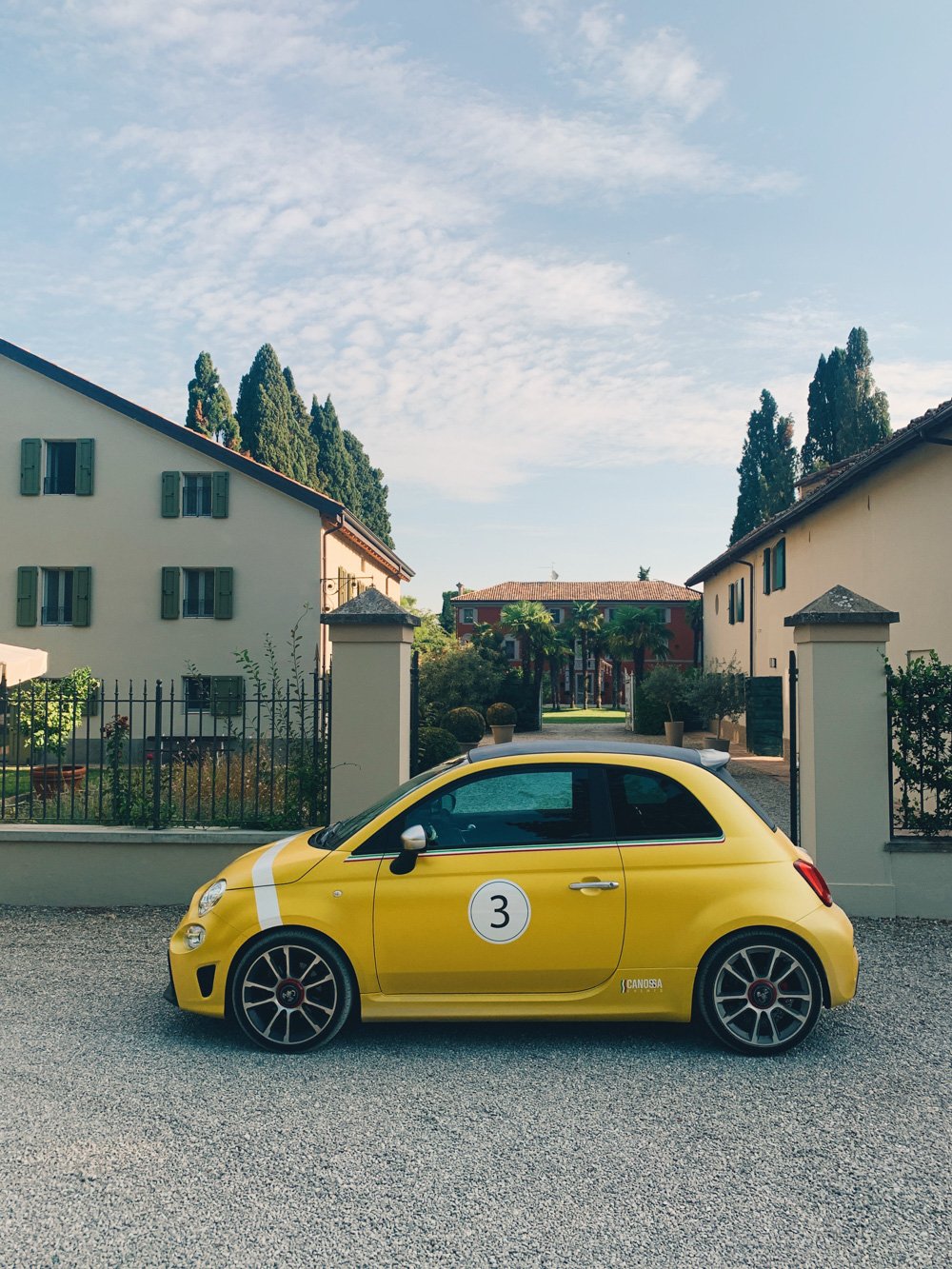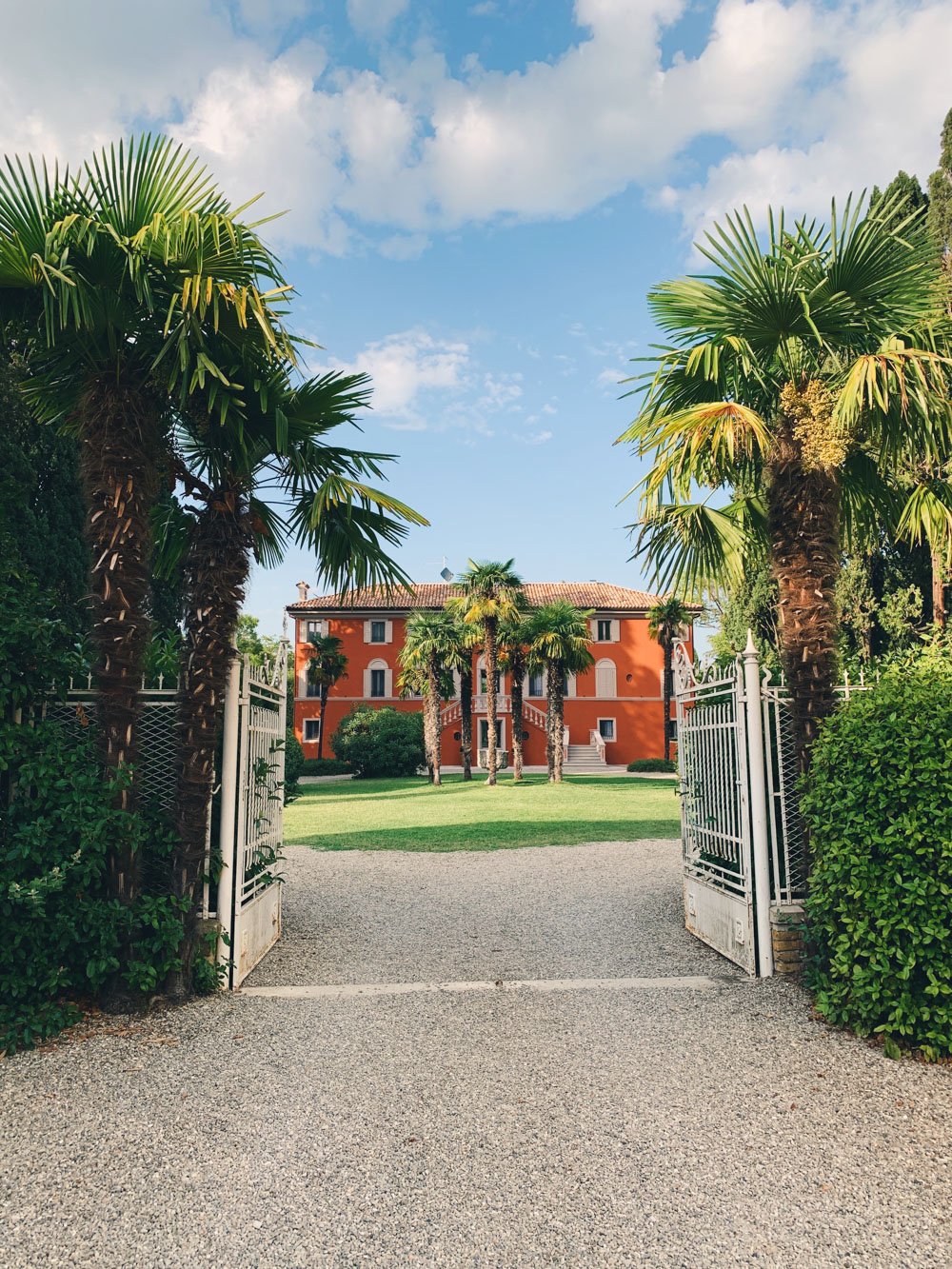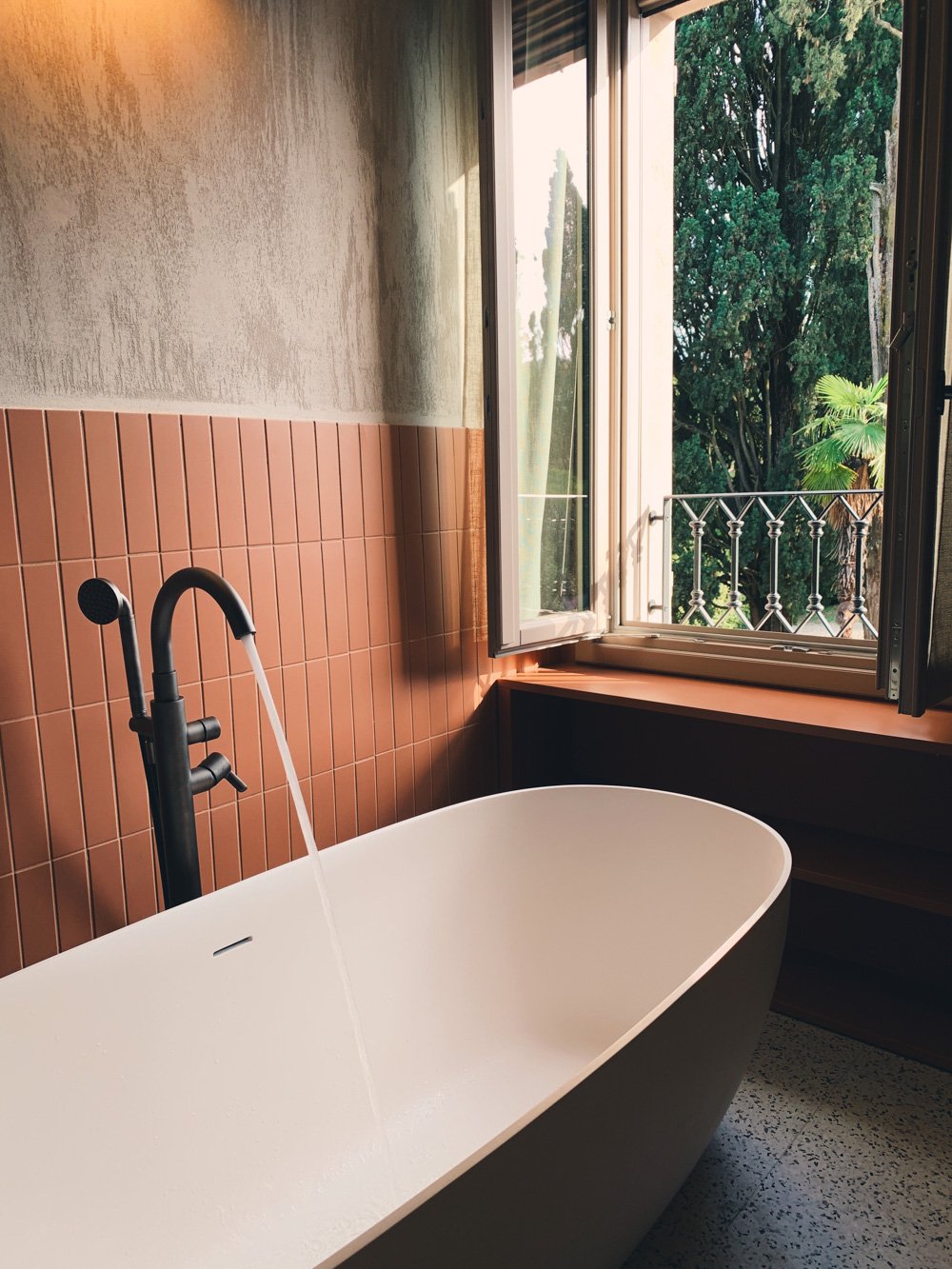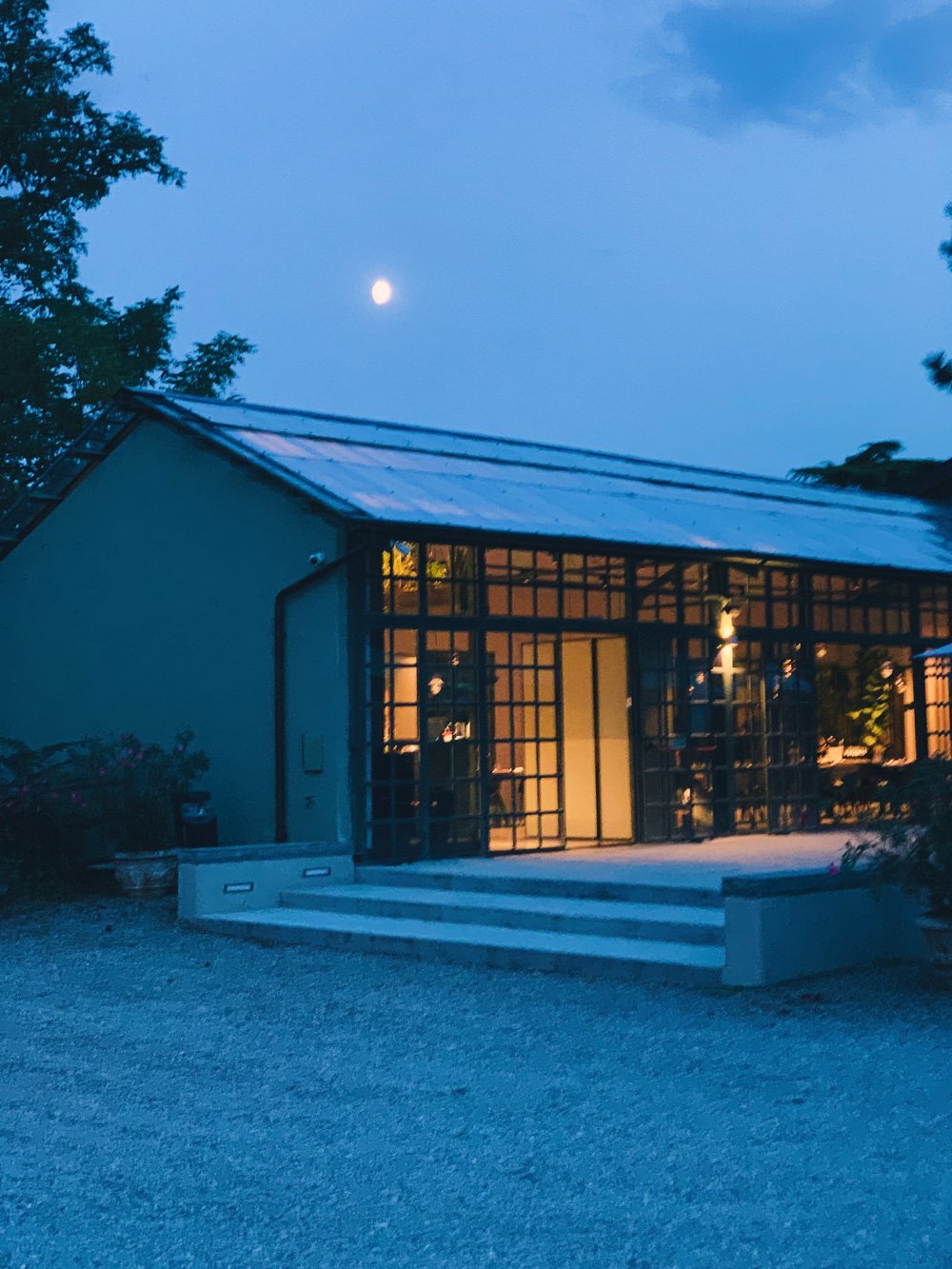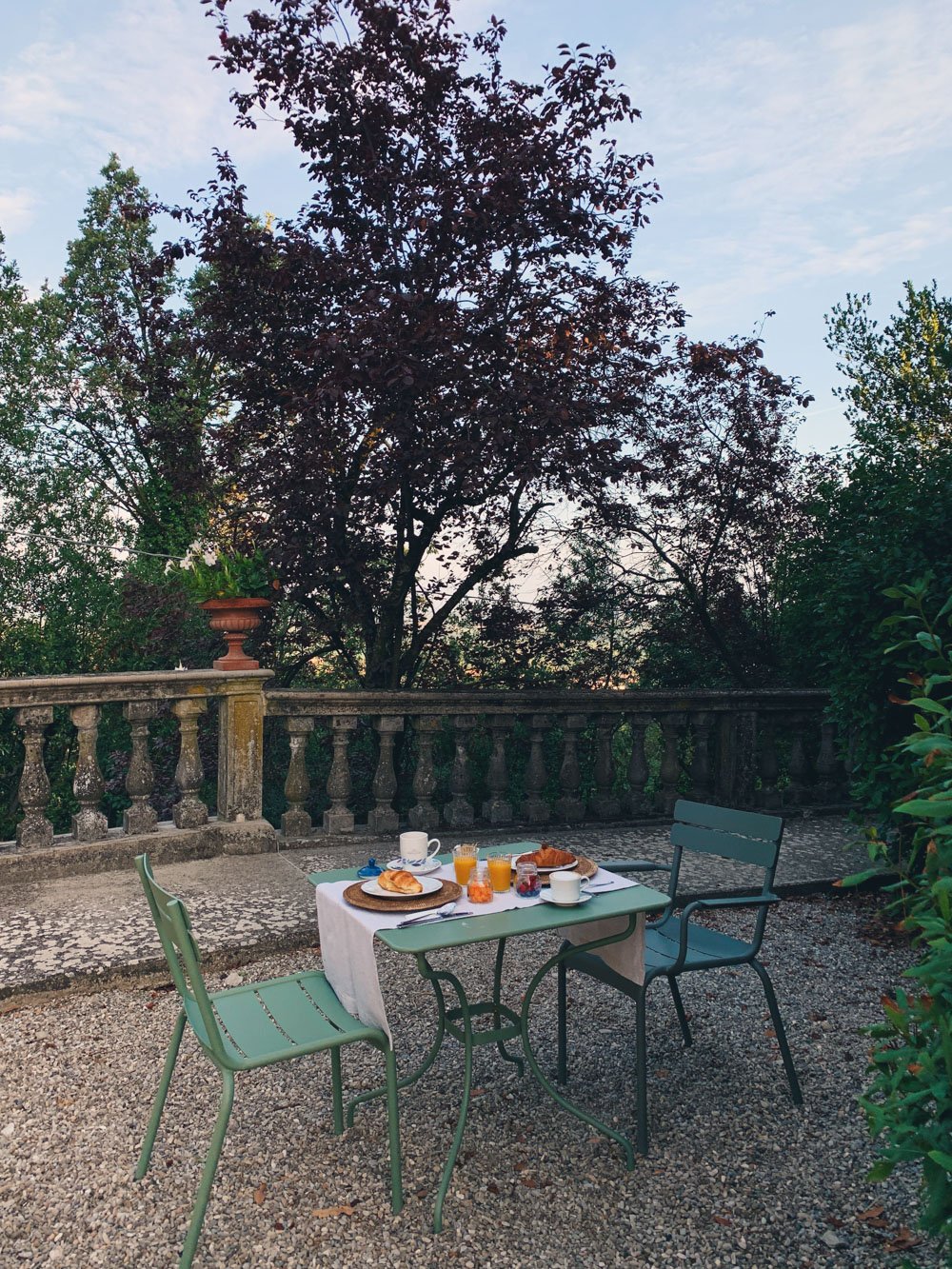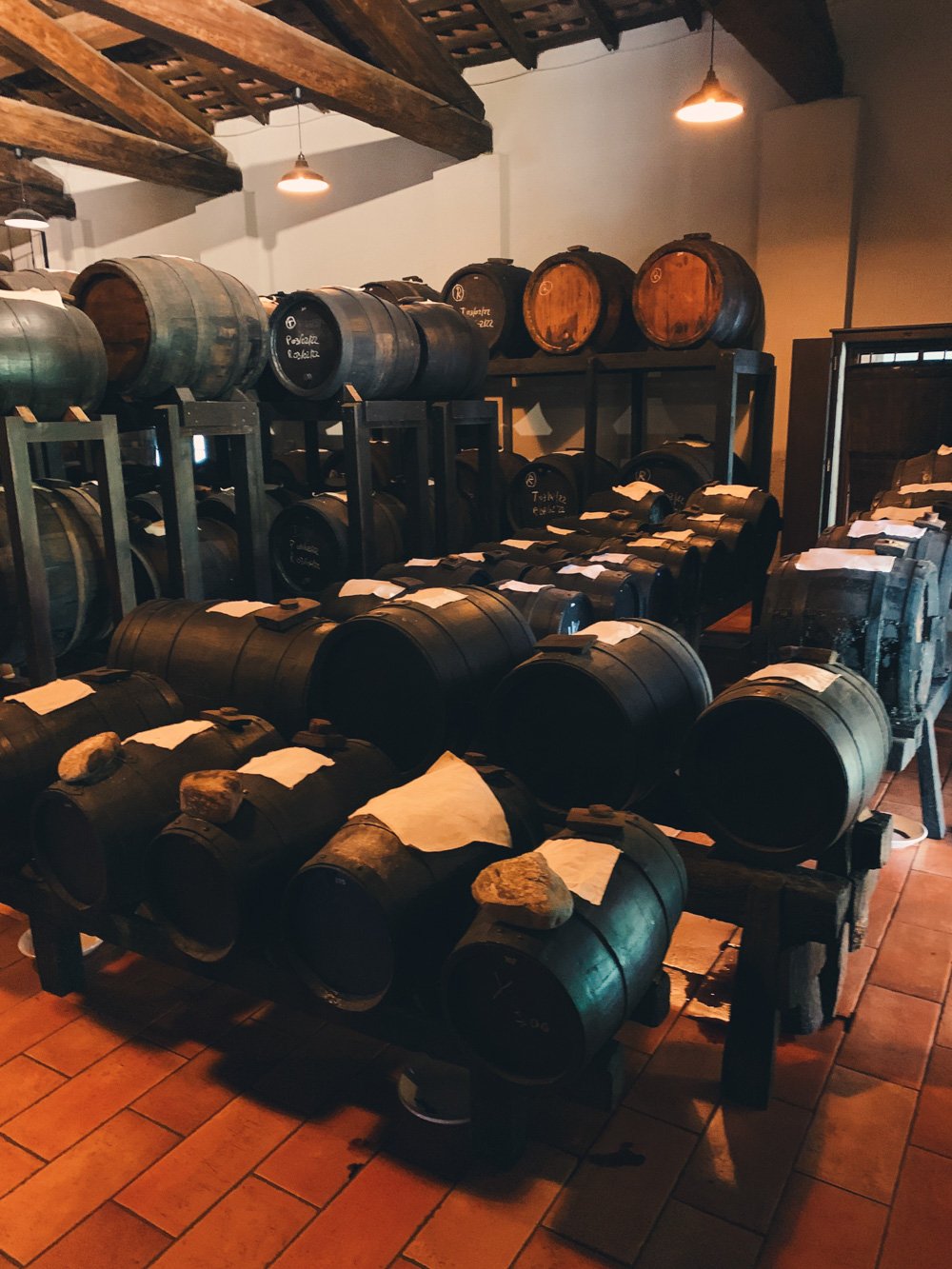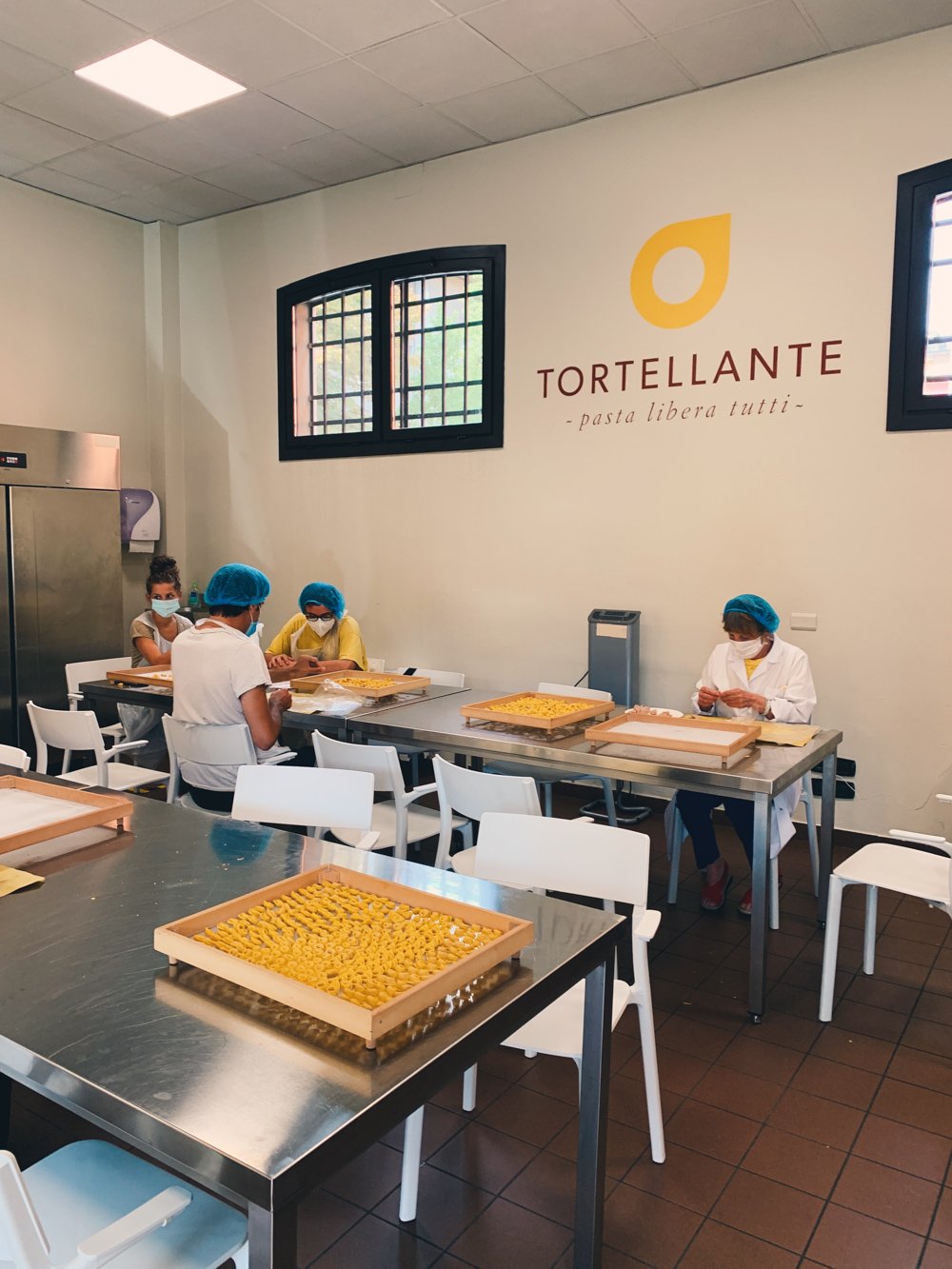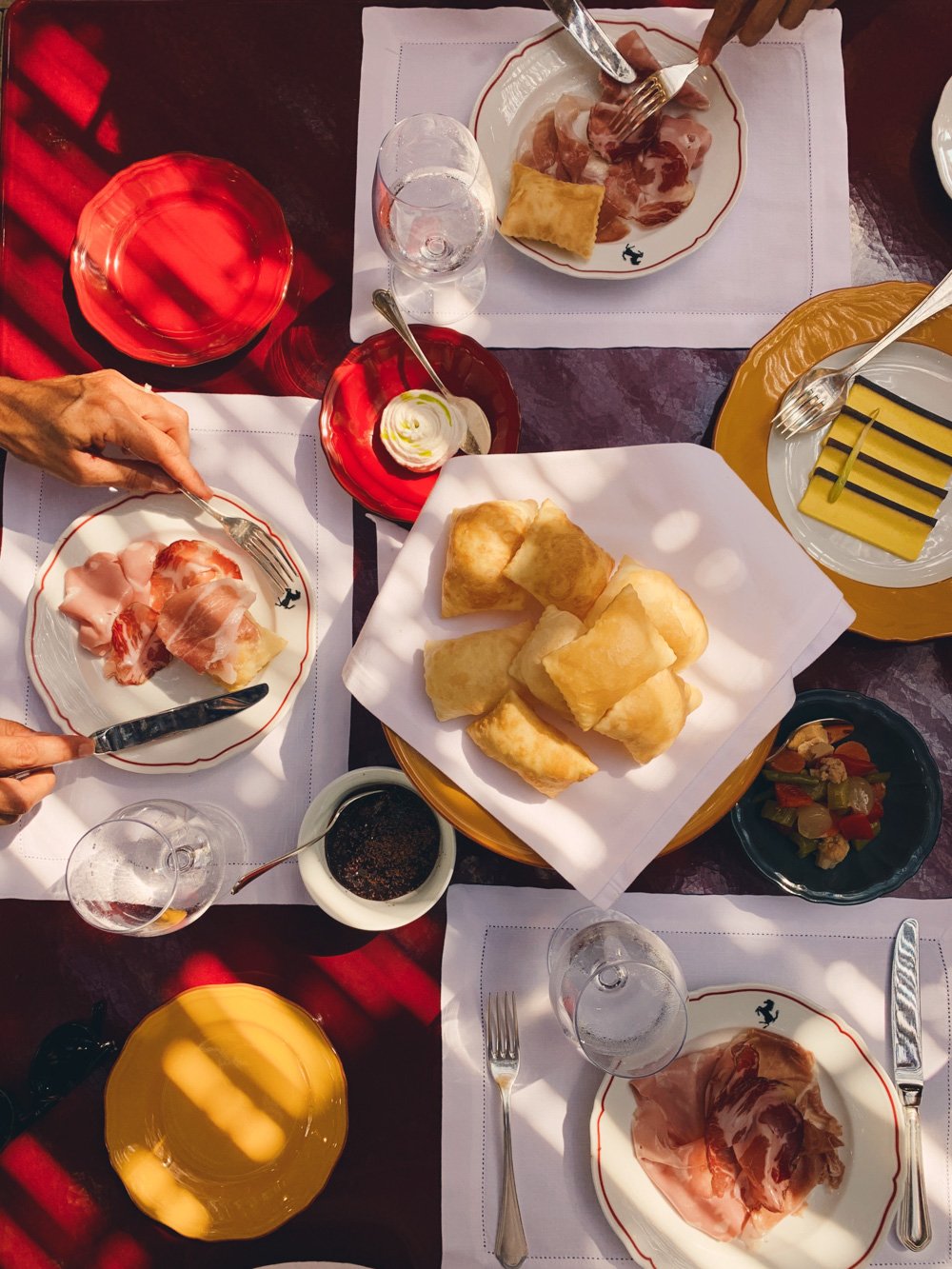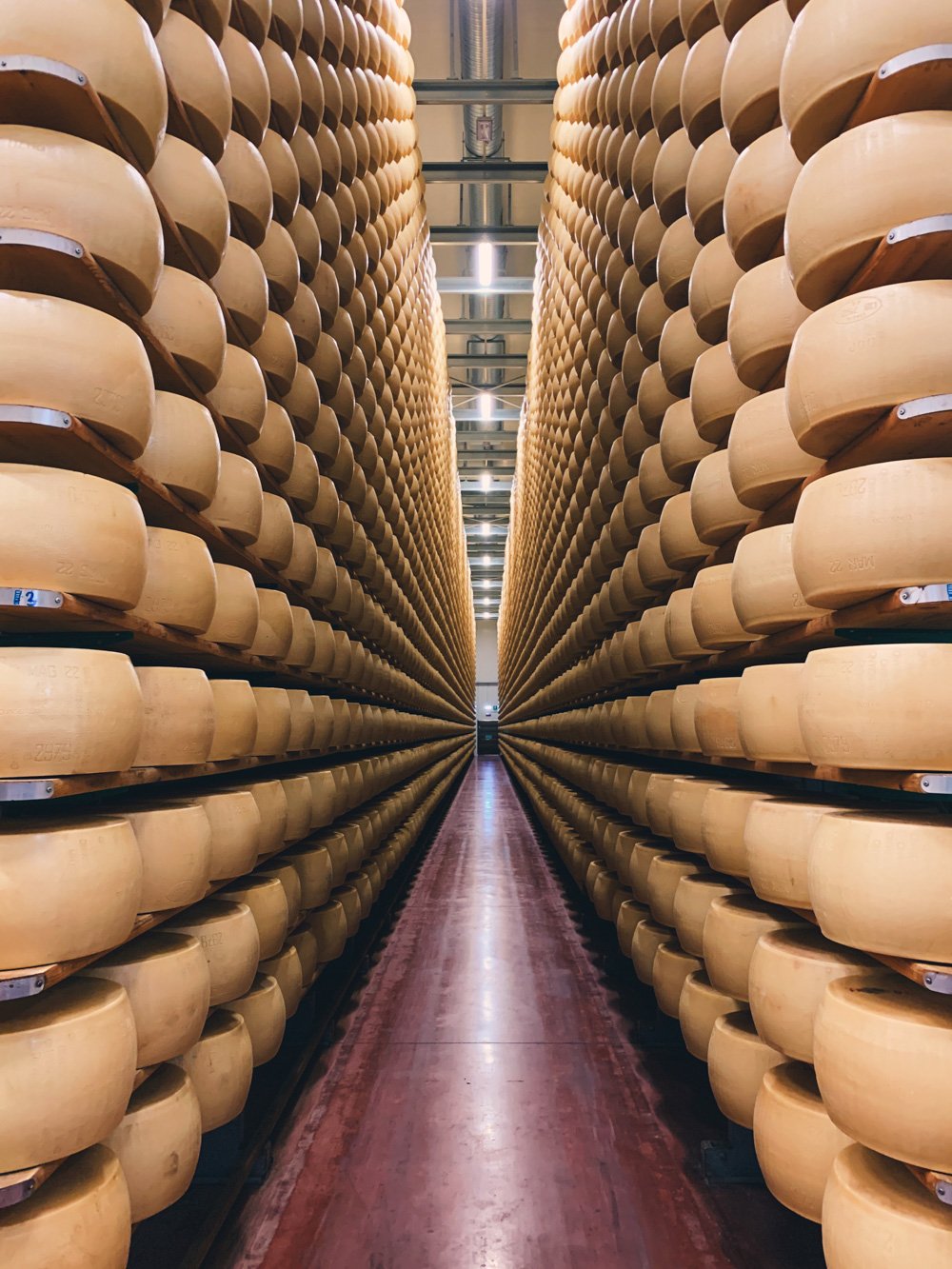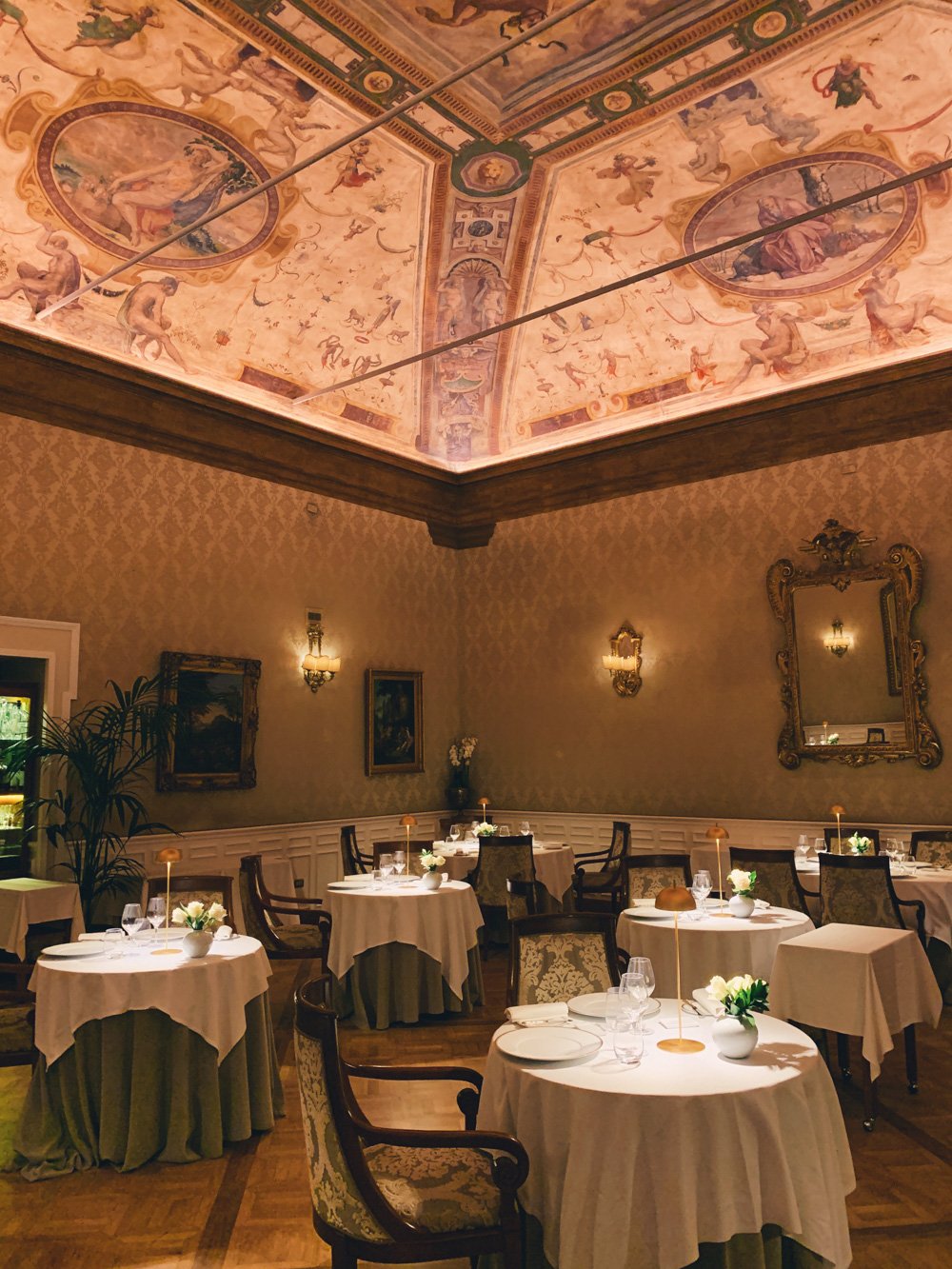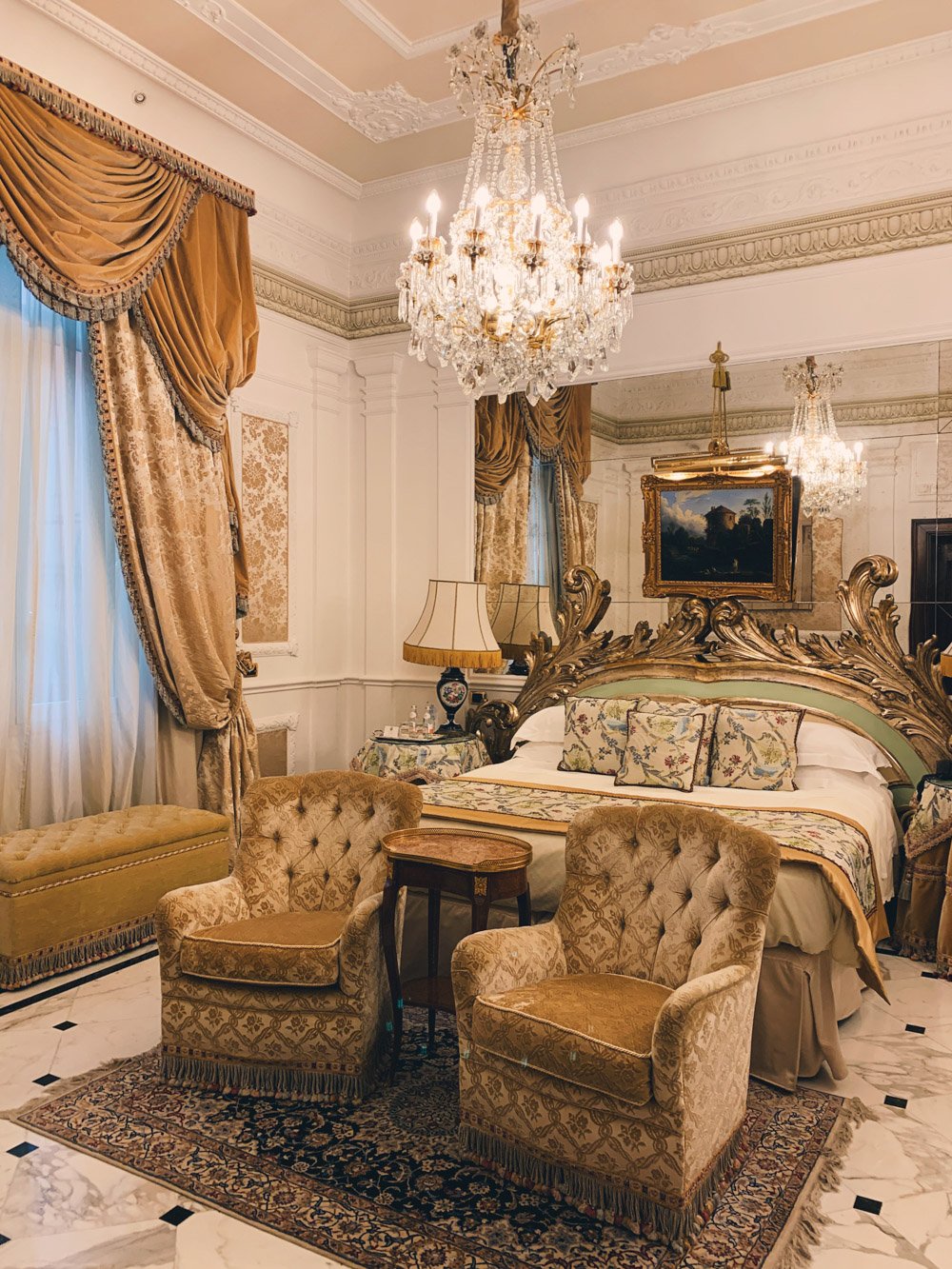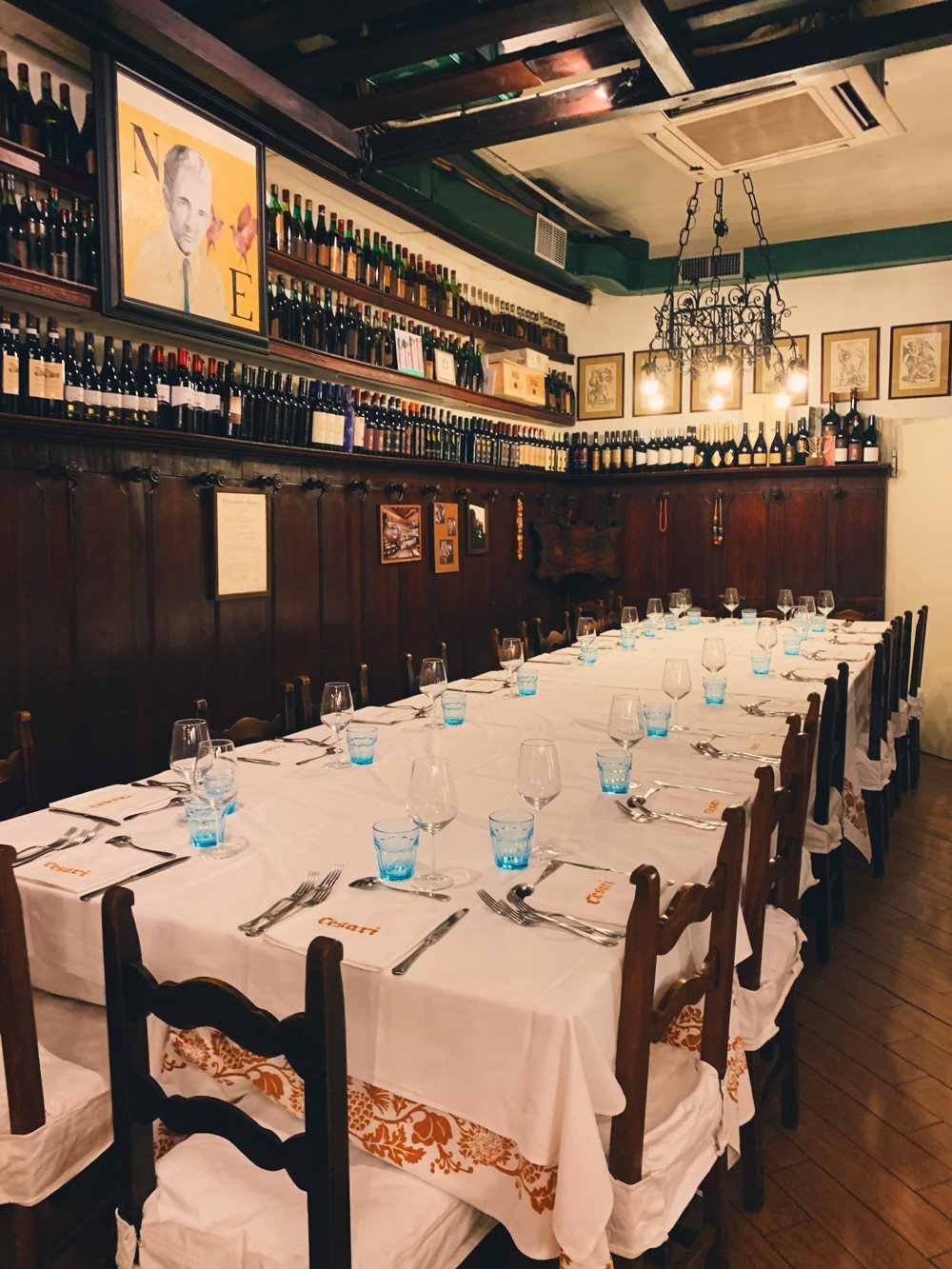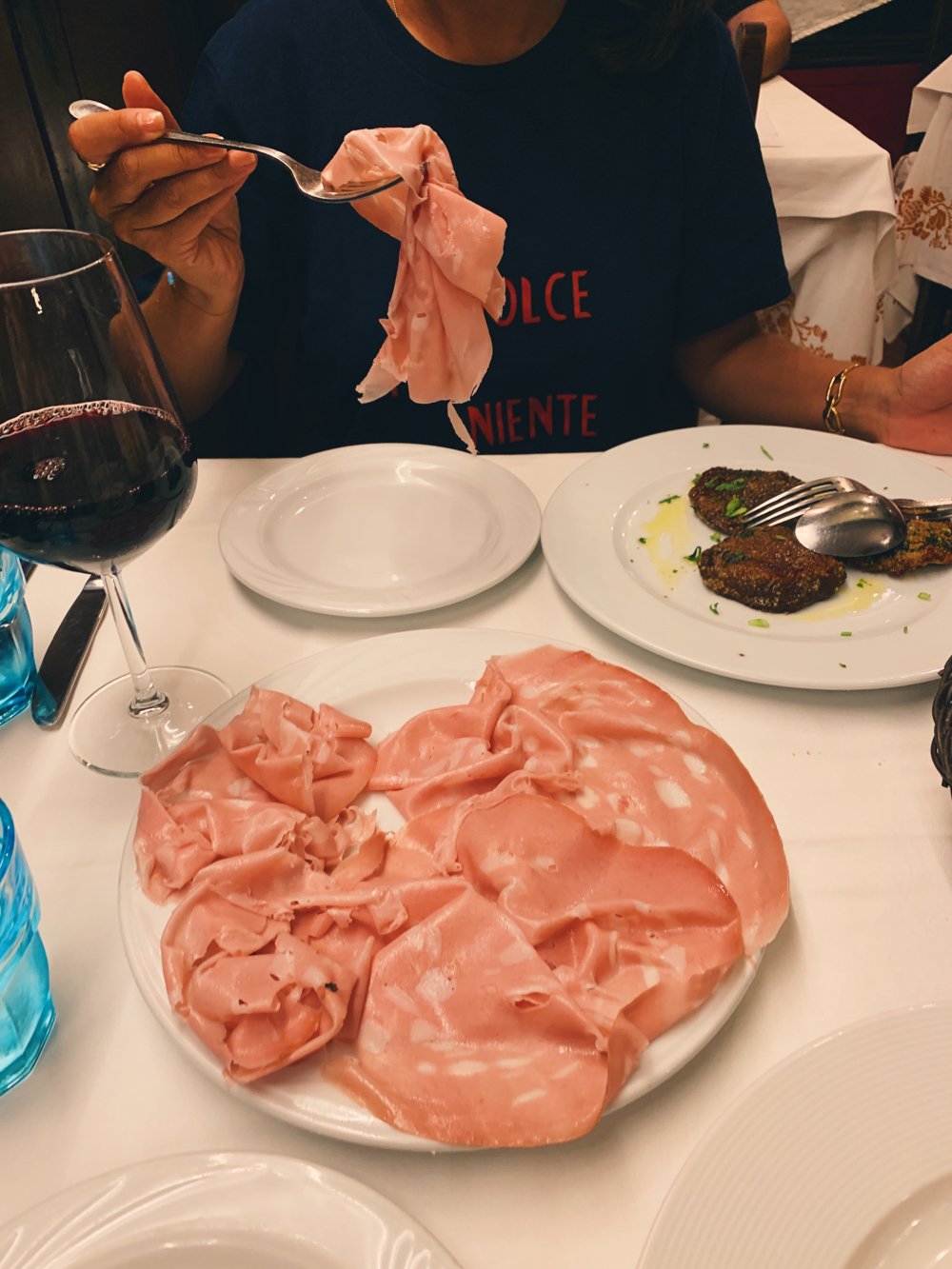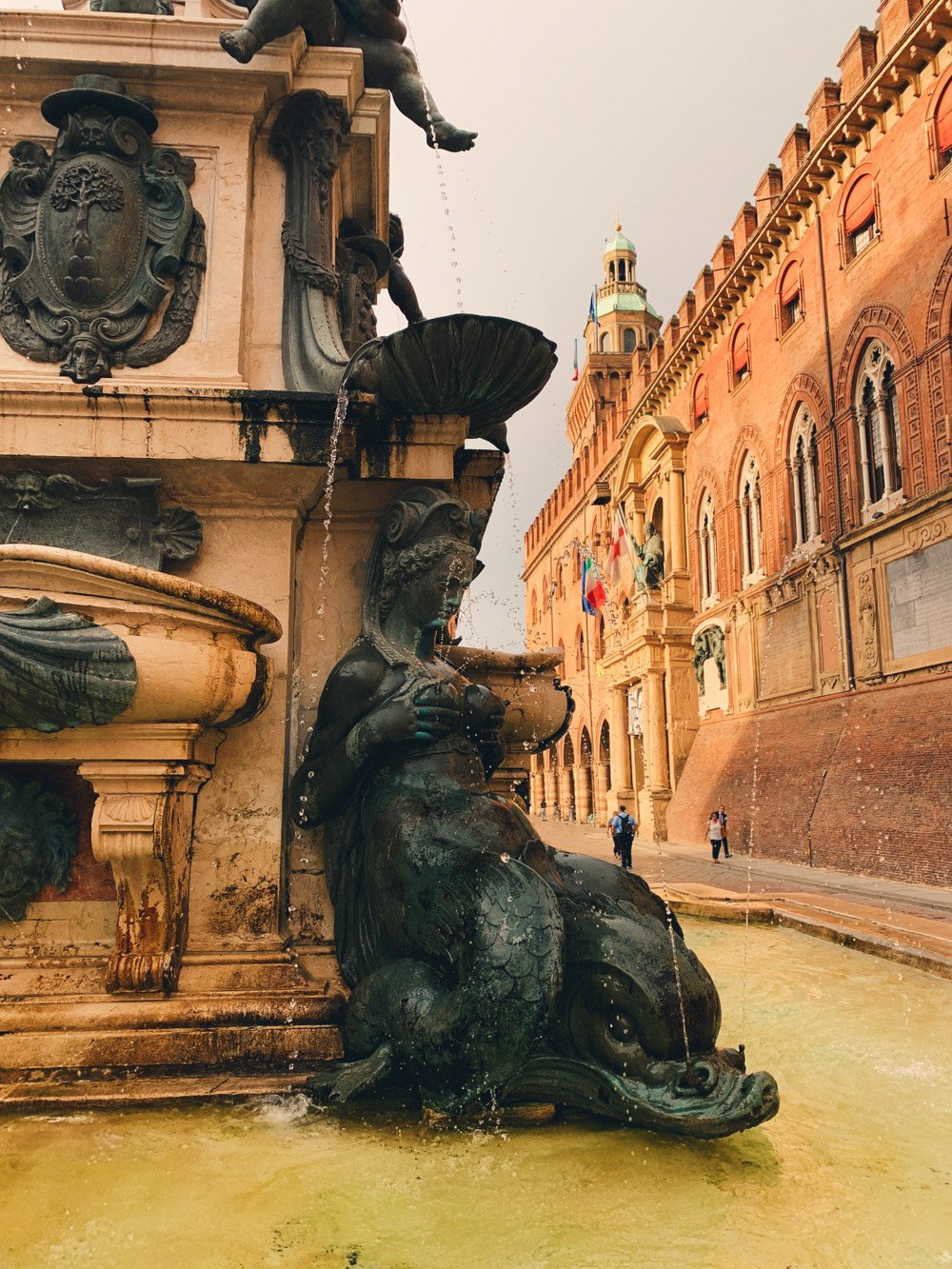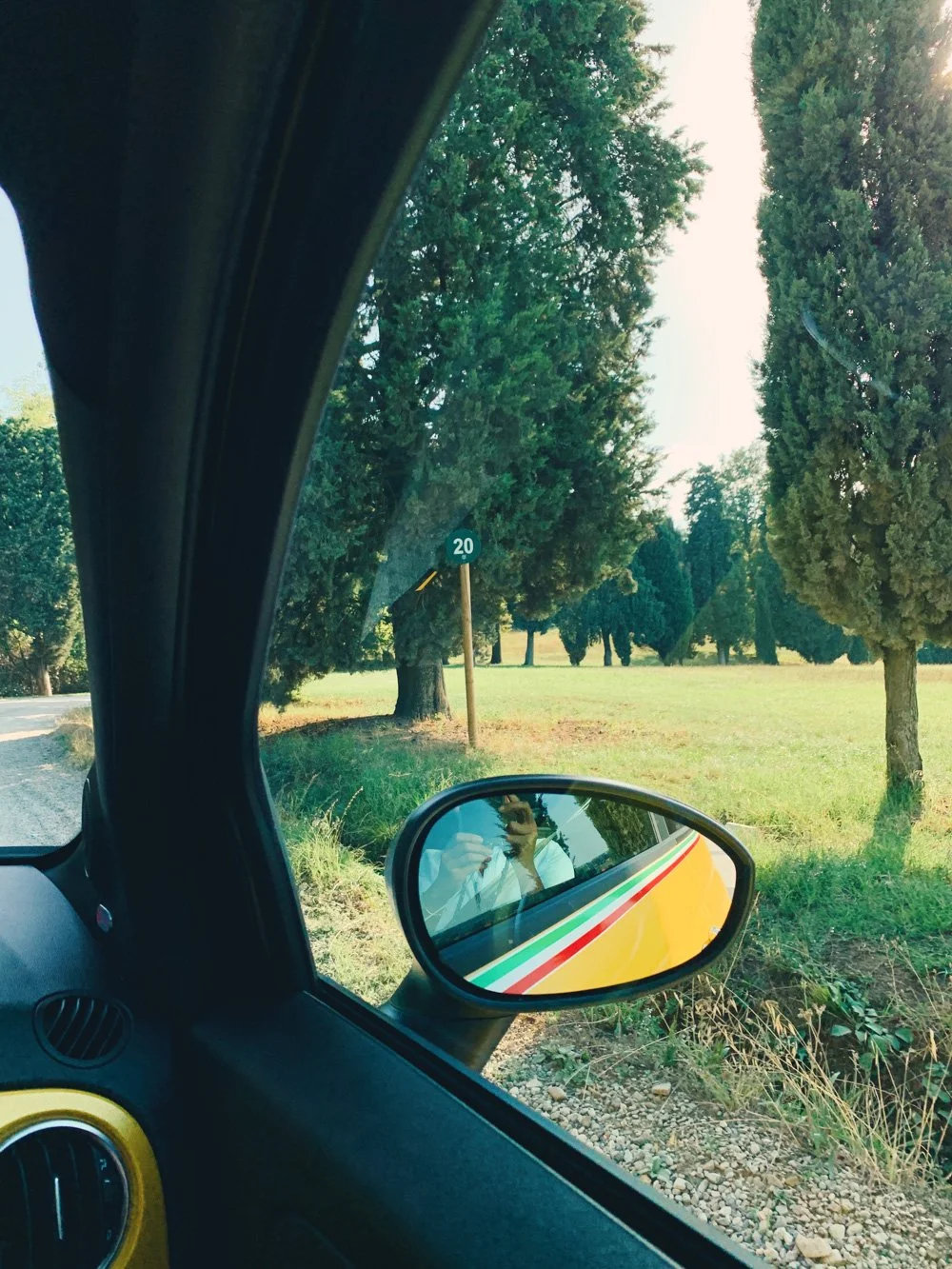A Road Trip In Emilia-Romagna, Italy
We set off in a sporty yellow Fiat 500 Abarth with the top down ( rent from Canossa Events in case you’re wondering), ready for an epic three-day road trip in the food valley of Italy - Emilia-Romagna region.
Emilia-Romagna is known for its elegant medieval cities, rich history, and fast cars (thinking Ferrari, Maserati, and Lamborghini). However, what has drawn us most to this region is the food. This region holds a paramount place on the international foodie map as it is where Parmigiano Reggiano, Aceto Balsamico di Modena, and Prosciutto di Parma are produced.
Day 1: Piacenza
Located in the Northernmost and Westernmost part of Emilia-Romagna (just over an hour drive from Milan International airport), Piacenza, with a name that means “to please”, is the perfect starting point of our road trip. This quiet , provincial town, relatively unknown to travellers, has a long historical past, which can be evidenced by a great number of old palaces and churches, and produces the biggest amount of D.O.P. cured meats, cheeses and wines in Italy, which makes it a true hidden gem of the region. (D.O.P. or P. O.D. stands for Protected Designation of Origin. It is assigned by the European Union to the name used to indicate a product that owes its characteristics to its place of origin, and its production, modification and processing occur within that geographical area.)
As for lunch, since the pig is king here, we have to try Piacenza’s renowned Salumi, even though there are plenty of hearty pasta and rice dishes on menus. We order affettati with Coppa Piacentina, La pancetta and salame Piancentino, cheese and some condiment. With its vivid red colour and heavy marbling, these cured meats taste remarkably smooth, almost creamy texture and a hammy flavour inflected with pepper and spices.
Another highlight of our visit here is the Piacenza Duomo, a Roman Catholic cathedral built between 1122 and 1233. It is one of the most important example of the Romanesque art in Italy. The best way to really explore this cathedral is by joining a guided tour. During the tour, we browse though an amazing archives of historical artefacts in the museum, including some meticulously hand-sewn mitres, admire the simple and yet majestic interiors of the cathedral, walk through some hidden passages and marvel at 17th century frescoes by Guercino up close and personal.
To Stay: For the night, we check into the Hotel Torre di San Martino, part of Castello di Rivalta, a historical castle located just 20 minutes drive from Piacenza. It is considered one of the architectural and historical jewels of western Emilia. The hotel has 12 luxury rooms, which are uniquely decorated in classic style. Definitely do a tour in the castle as it is incredibly charming and interesting. The castle has been ( and still is) belong to the the Landi Family since 14th century. The current Marquis Giuseppe Landi and his wife are still residing here in the summer months. In addition to the historical rooms, artworks, there is also a museum area dedicated to the weapons, uniforms and that of exploration and sacred art. The Castle is famous for being periodically frequented by prestigious guests during their stays in Italy, such as the royal family of England.
Day 2: Parma
We get up early and continue our journey south to Parma, home to exquisite prosciutto and sumptuous Parmigiano-Reggiano cheese. At the heart of the Parma, Piazza del Duomo, we are warmly greeted by the lovely guide Sara Dallacasagrande, from Food Valley Travel. First stop of the tour is Duomo. Don’t be deceived by its dull-looking façade, this Romanesque creation is quite ornate inside. With Sara’s insightful knowledge on Italian art and history, we are able to notice and appreciate many of the fine architectural details of the cathedral, especially the dome, painted with Antonio da Correggio’s Assunzione della Vergine (Assumption of the Virgin). Then we wander together Parma’s tidy and romantic old cobbled streets and look at several impressive buildings and monuments. To me, Parma still has this old Italian charm that is fading away from many other cities in modern Italy. You don find many fast-fashion or other chain luxury stores here, instead small family-owned boutiques and speciality stores that have been in business for decades. You’ll also find cycling is popular. We simply can’t stop admiring the attitude of ladies and gents who cycle in their stylish attire.
For a coffee and gelato break, Sara take us to Ciacco Lab, a cute little cafe, which used to a hat shop for years. As for lunch, we head to La Filoma, a tradtional trattoria close to the Baptistery and Piazza Duomo. The incredibly nice Chef Alessandro prepare everything fresh on the spot. This is a beloved go-to dinner spot for the opera goers. Don’t miss on a quick visit to Parma’s post office, a majestic building in Art Nouveau style. Sara tells us that this is used to be a theatre.
After we leave the city centre of Parma, we continue to Prosciuttificio Galloni, one of the best producers of Prosciutto di Parma in the world. With our guide Barbara, we are led into their production facility has been, until recently, secluded to the public. After seeing each stage of ham curing process, we come to the conclusion that the true secret of Galloni's success is quality control. To finish our tour, we are invited to the secret cellar with display of 10,000 prosciutto legs and classic music playing in the background. Each slice of prosciutto is such a treat for the palate.
To Stay: If you are a food and wine lover like we are, the perfect place to stay for the night would be the pretty boutique Relais Roncolo 1888, which is part of the wine estate Venturini Baldini, which produces awarding-winning organic Lambrusco wines. The estate is surrounded by the cypress trees, which remind us fondly of the typical Tuscan landscape. The Relais is right between the cities of Parma and Modena (around 40-45 minutes drive to both), which is perfect stopover place to our next stop - Modena. We sleep in the newly renovated suite in the historical Villa Manodori. Decorated and furnished with art frescoes, paintings, renowned design furniture, the spacious suite is not only stylish, but also comfortable. The bathtub with a view facing the garden is a nice touch. In addition to wine, Venturini Baldini also produces aceto balsamico under the name “Acetaia di Canossa”. Guests are offered wine and Balsamic vinegar tasting during their stay. Just before the nightfall, the lady of the house, Julia Prestia joined us for an exquisite dinner in the beautiful restaurant Limonaia. Previously worked as banker and consultant in London, Julia and her husband Giuseppe traded their busy city job for the Italian country life. For years, they devoted themselves wholeheartedly into the vineyard, Aceto and now the guest house and as a result, both Venturini Baldini and Roncolo 1888 are the talk of town in Emilia-Romagna.
Day 3: Modena & Bologna
It is time to restart our Fiat 500 Abarth and hit the road. This is the last day of our gastronomic adventure and we first pay a visit to the Modena’s oldest and most celebrated Balsamic Vinegar producer Acetaia Giusti. Since 1605, the Giusti family has been making Balsamic Vinegar and now the family company is run by the 17th generation. The original recipe developed by Giuseppe Giusti for its award-winning vinegar is still used for its production. I love that its vinegar has a dense texture of its vinegar and delicate balance of sour and sweet. There is also fun and sweet Giusti family tradition that when a girl is born, a row of vinegar barrels is set up in her name. When the girl gets married, those well-aged barrels become her dowry.
When in Emilia-Romagna, we can’t miss the opportunity to learn how the region’s most classic pasta, tortellini, are made. Tortellante, a great initative founded by Michelin-starred chef Massimo Bottura and his wife Lara Gilmore, is just the place to do it. Here, autistic teenagers and adults learn to make fresh pasta by hand. It is a place that involves the whole community and help the autistic children to build their lives into adults and grow independence. Seriously, what could be a better way to learn to make authentic tortellini from the Italian nonna (grandma). What even more special is that the best-looking tortellini will then be used in Bottura’s gourmet restaurants, such as Osteria Francescana, Casa Maria Luigia and Cavallino. How cool is that?!
Of course, when in Modena, we must try the food made by the world-class, three-Michelin-starred chef Massimo Bottura. What could be a better choice for lunch than the newly reborn Ferrari’s legendary restaurant Cavallino? And with Lara Gilmore as our lunch date?! Between the dishes, Lara recounts the ideas and stories behind this amazing collaboration among chef Bottura, Ferrari and architect Mahdavi. Now the-almost-always-fully-booked Cavallino serves a traditional trattoria-style local dishes in a stylish venue that preserves and celebrates the endless memories and successes of Ferrari. If you are overwhelmed by the great selection of dishes on the menu, let me recommend some of our favourites: Gnocco fritto e salumi, Crème Caramel al Parmigiano Reggiano, Tagliatelle al ragù, Rosette cotte nel forno a legna, just to name a few.
The last stop before we head to Bologna is at Parmigiano-Reggiano factory of Castelnovese. Surrounded by 30,000 plus wheels of cheese, we are fascinated by the process of making Parmesan cheese. In order to branded as Parmigiano, strictly quality control is carried out over time. Every wheel of parmesan is inspected after a year’s ageing by staff with a well-trained ear and a little hammer, searching for undesirable cracks and bubbles inside.
To Stay: Just before the nightfall, we check into Grand Hotel Majestic già Baglioni, the oldest and most prestigious hotel in Bologna, sits in the heart of the city on Via dell'Indipendenza. The hotel impresses its guests with its marble floors, Doric columns and gilded antique furnishings that characterise the hotel's opulent interiors. Particularly noteworthy are the centuries-old frescoes that adorn the ceiling of the restaurant and preserved ancient Roman road under the hotel.
Through words of mouth, we find ourselves sitting at a dinner table in Cesari, a cosy and warm family-run restaurant that serves regional classics such as tortellini in brodo, tagliatelle with Bolognese sauce, veal cheek with vegetable flan, and meatballs with peas. Artisan table linens, dark wood panelled walls, period furniture and hanging copper pots and rows of wine bottles make us feel that we are invited to someone’s private home rather than a trattoria. The dishes here are sublime and the services are perfecto. Definitely don’t miss it when you visit Bologna.
And with that, we finish on a high note with our three-day road trip in Emilia-Romagna. We couldn’t say enough good things about our little Fiat 500 Abarth from Canossa Events. It is super fun and safe to drive, especially on the narrow town street and Italian countryside. Despite the great experiences collected over these three days, we did learn something else as well. Stay longer than three days! There is no much more to be explored in this region, especially in the south of Bologna. Also don’t make a tight schedule like I did. Take your time and slow travel. The people of Emilia-Romagna are extremely hospitable, meaning you’ll always, always end up staying in any place longer than you had originally planned.
*In corporation with Emilia-Romagna Tourism Board. All opinions are my own.
